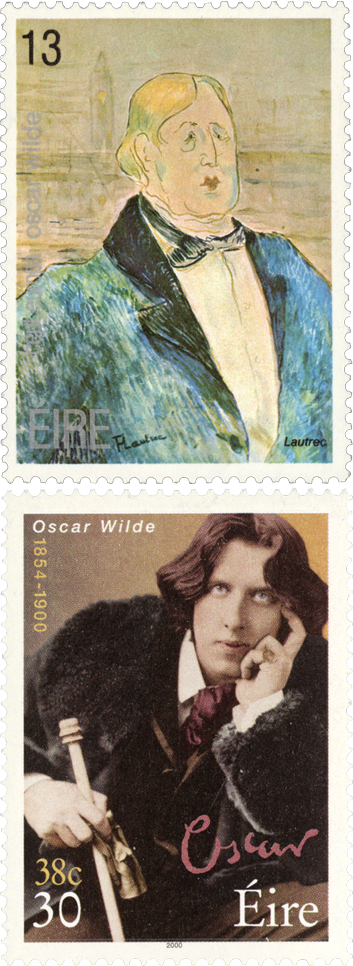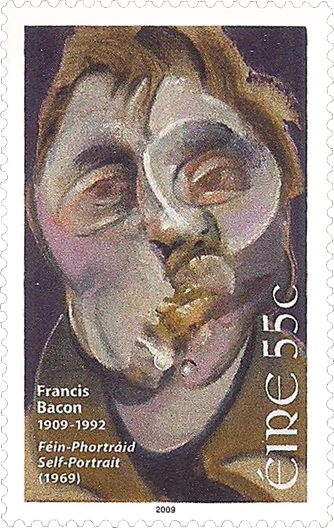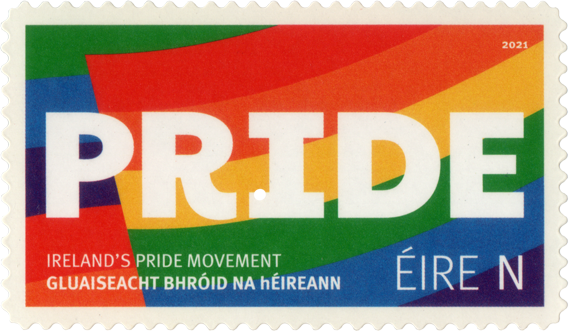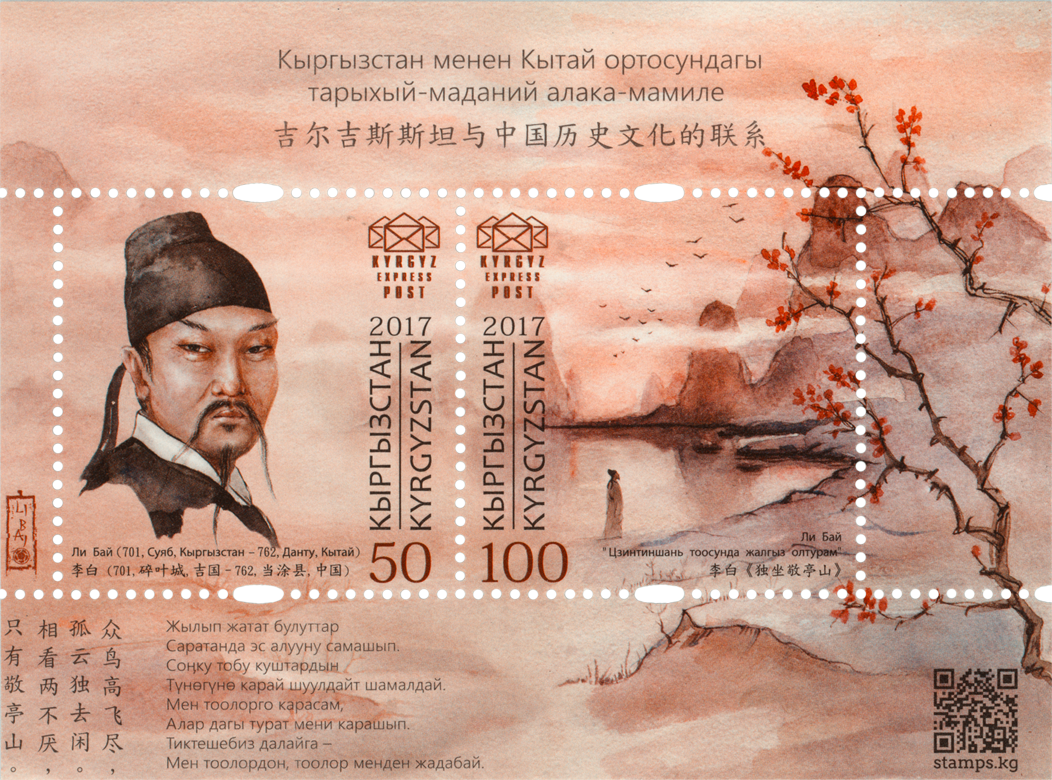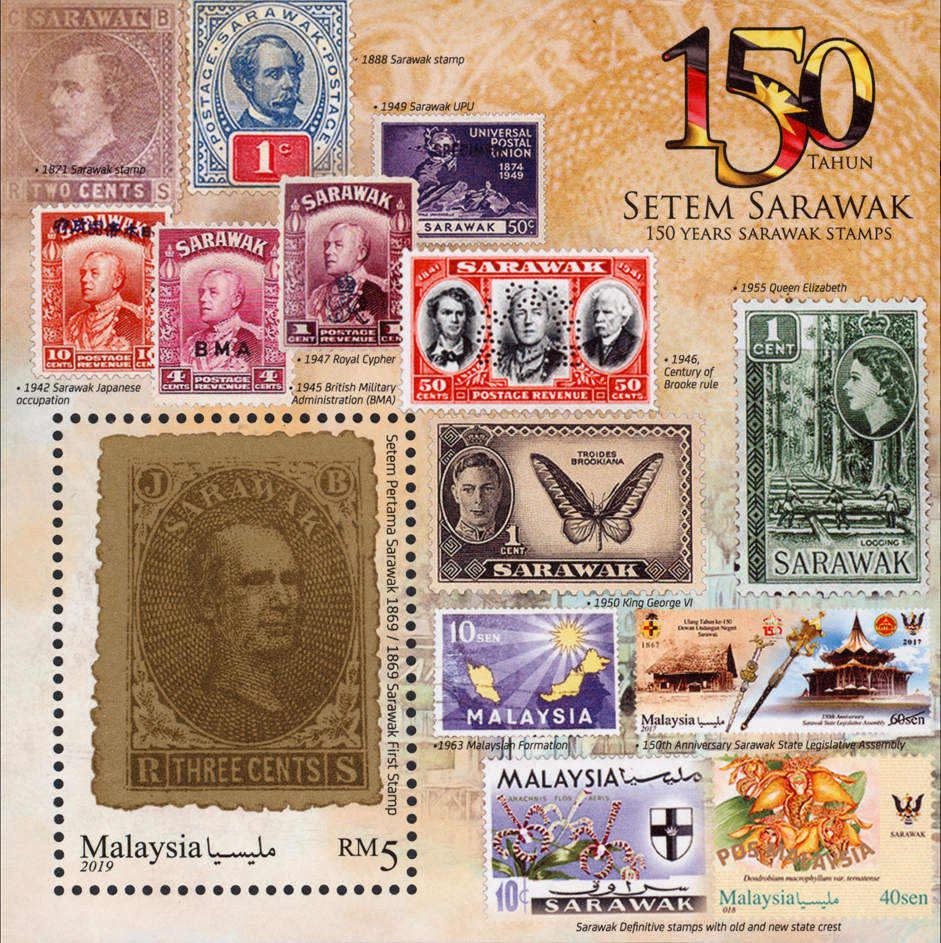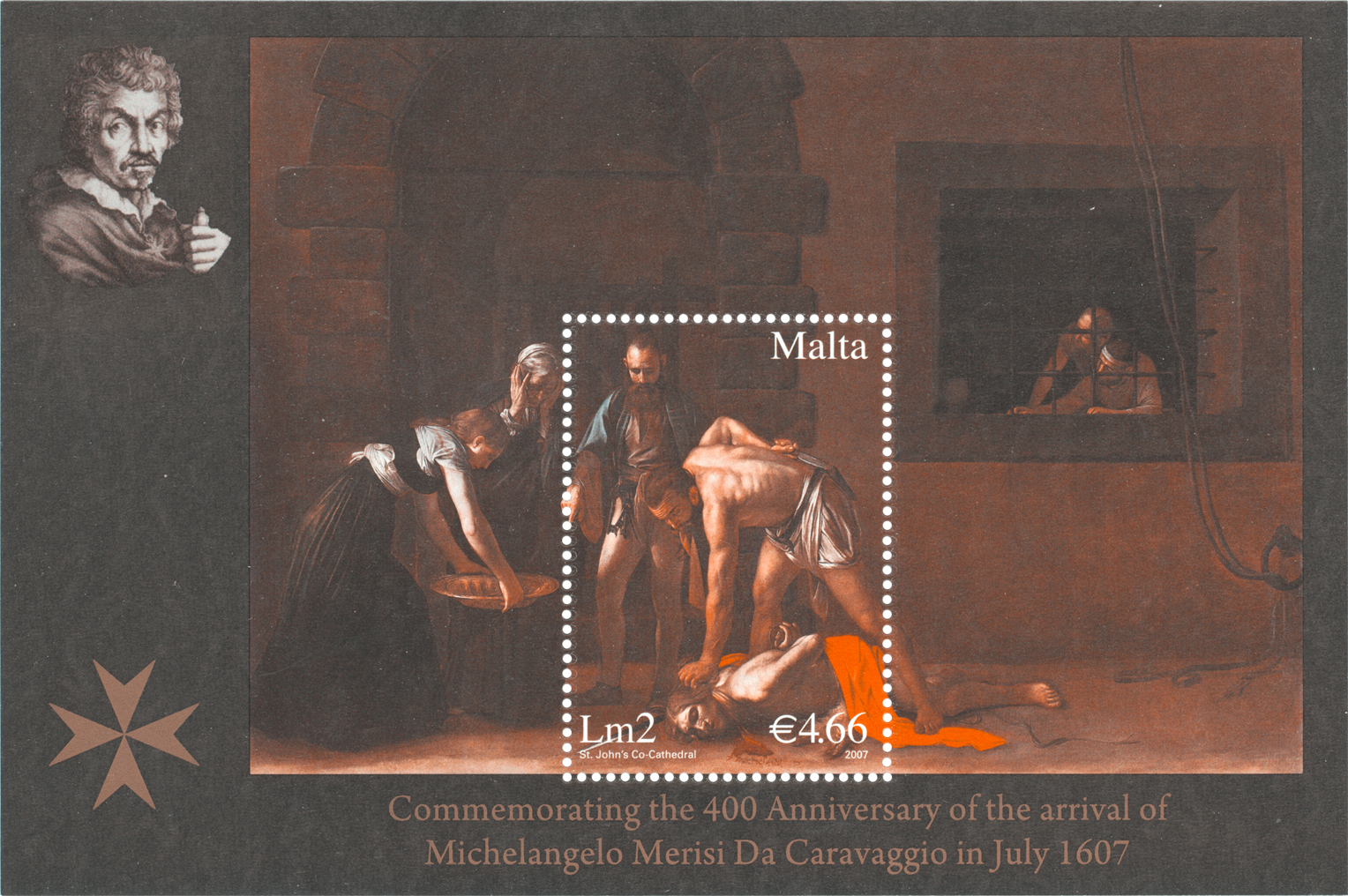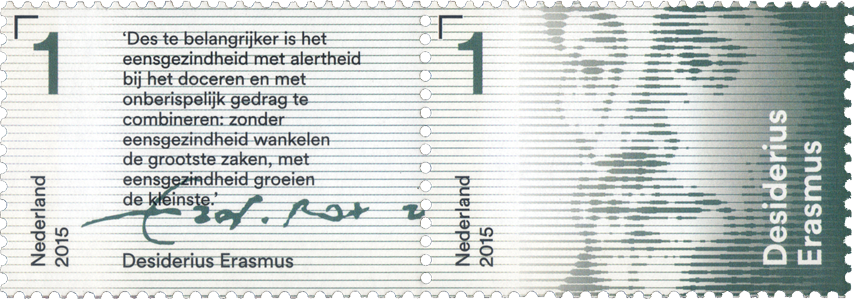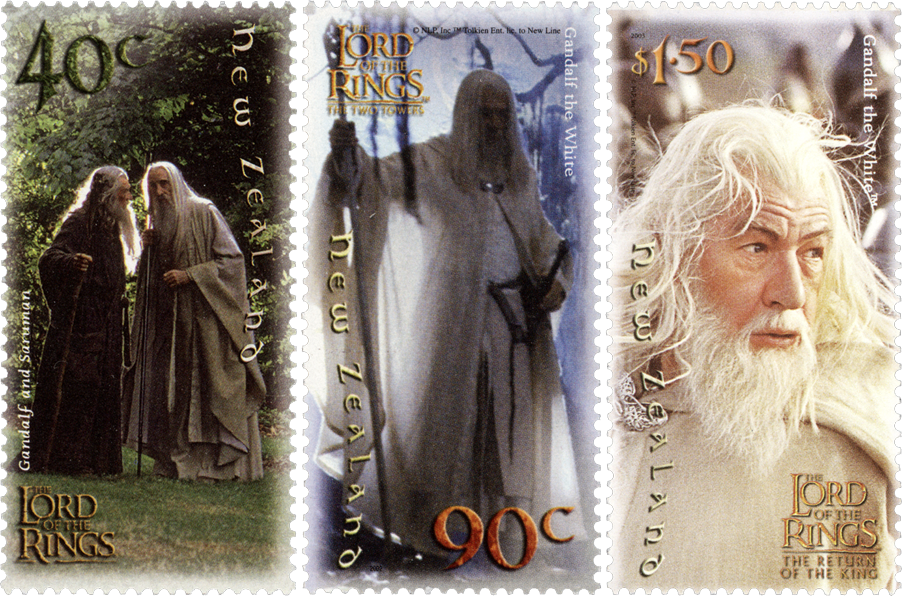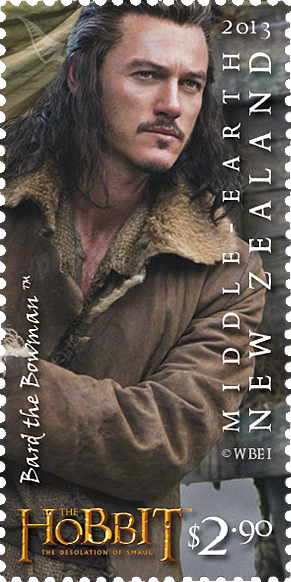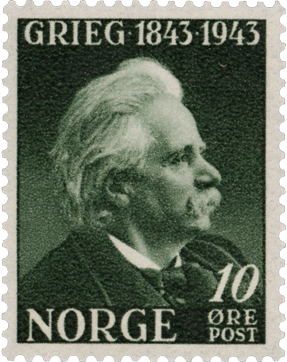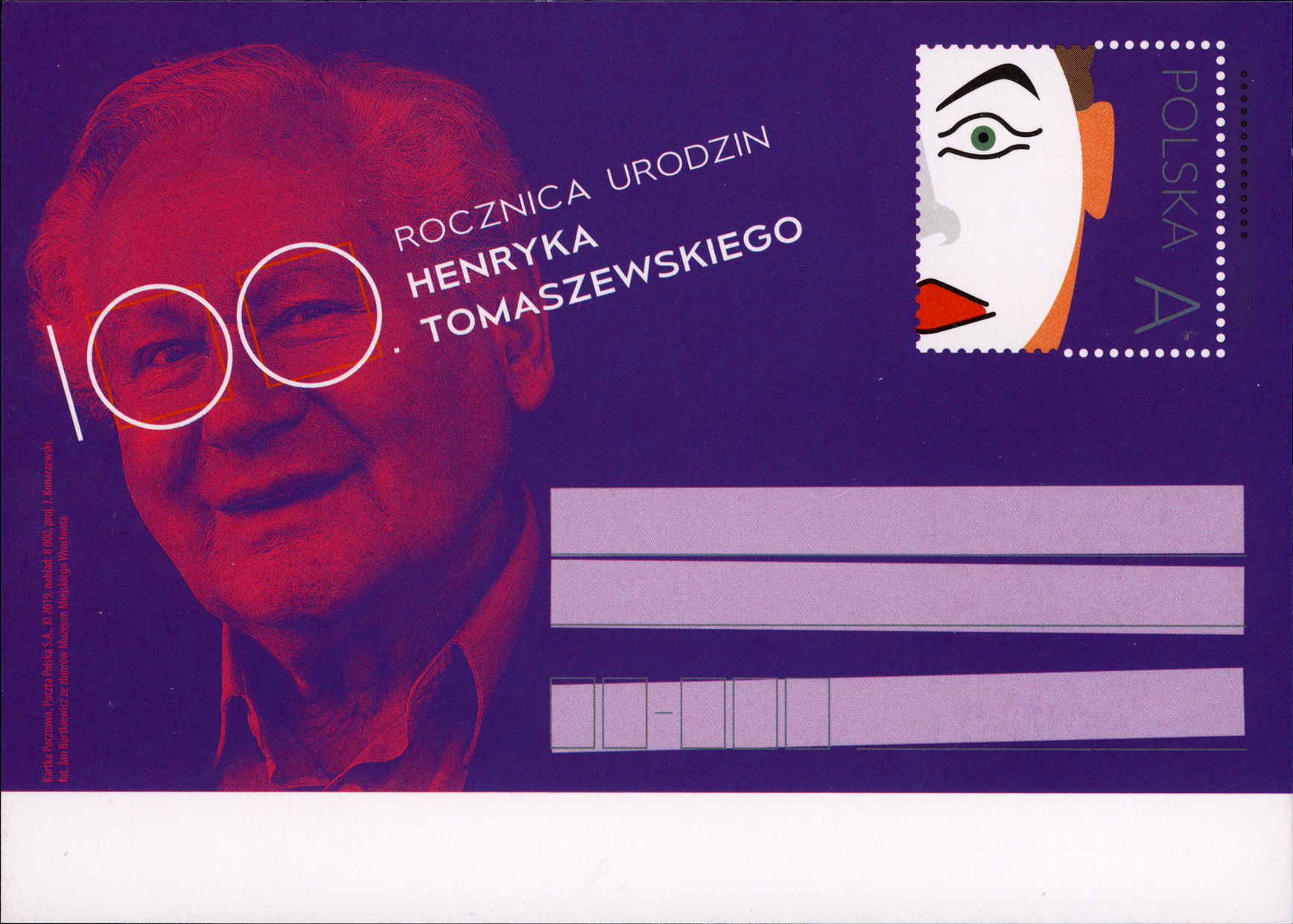LGBTQ Foreign Stamp Gallery
Below is a sampling of the many foreign LGBTQ themed stamps available. Shown are primarily stamps with subject matter that relates to the country of issue. Unless there is no other source, topical issues having themes with no connection to the issuing entity, usually promoted by philatelic agents, are not included here. Otherwise, if your favorite(s) are missing, help add to this page by contacting the webmaster who is listed on the "Contacts Us" page of this website. Either high resolution scans or actual items are acceptible; the latter will be scanned and returned if desired. Be sure to provide a brief description of the subject matter, to include how it relates to a LGBTQ theme.
The sexuality of famous personalities is often open to debate. Even today, many remain in the closet for fear of ruining their career and relationships. For some individuals depicted on the stamps listed below, all we have are clues as their being or possibly being gay, lesbian or bisexual; correspondence that would reveal homosexual relationships was often destroyed after the death of those involved. Also included are some LGBTQ icons. The biographical sketches below are drawn from Wikipedia, Biography.com, Britannica.com, the Gay and Lesbian History on Stamps Journal, the Lambda Philatelic Journal, and various LGBTQ websites.
The topic AIDS on stamps is not explored here. This subject matter is comprehensively covered up to the year 2021 on the AIDS on Stamps website.
Kamehameha III
Hawaii, Scott #5-7
Kamehameha III (1814-1854) was the third king of the Kingdom of Hawaii. His goal was the careful balancing of modernization by adopting Western ways while keeping the nation intact. During his reign, Hawaii evolved from an absolute monarchy to a constitutional monarchy. Prior to his marriage and his taking a mistress, he had at least one same-sex sexual relationship, known as aikāne, a part of life for Hawaiian nobility, with a young Hawaiian-Tahitian priest named Ka'omi. (The images shown are replica stamps.)
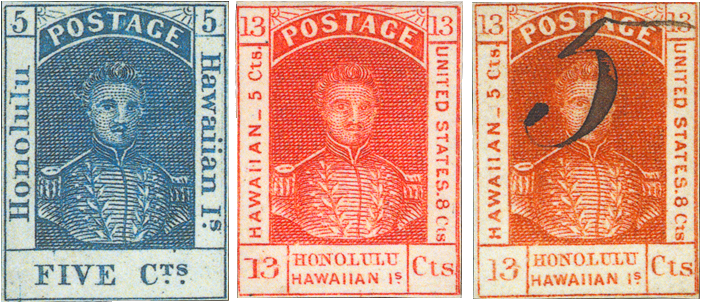
Leslie Cheung
Hong Kong, Scott #1167
One of the founding fathers of Cantopop, Leslie Cheung (1956-2003) achieved huge success in music and film. He released his breakthrough album, Wind Blows On, in 1982. Two years later, his song, "Monica," became the best-selling single in Hong Kong history, making him a superstar. He starred in John Woo’s 1986 film, A Better Tomorrow, breaking Hong Kong's box office record. Leslie moved to Vancouver in 1990 and became a Canadian citizen. In 1993, he won a Golden Horse Film Award for Best Original Song. Although he said he was bisexual, he announced his same-sex relationship with Daffy Tong Hok-tak during a 1997 concert. Cheung was diagnosed with depression and later died by suicide, jumping off the 24th floor of the Mandarin Oriental Hotel in Hong Kong.
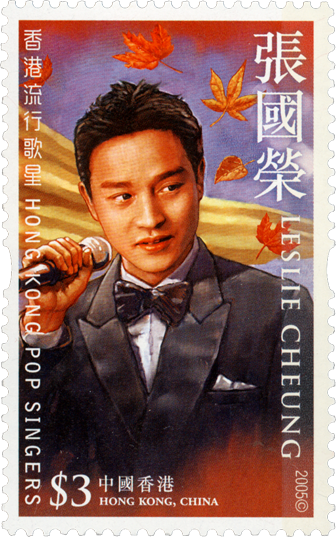
Artemis and Callisto
Hungary, Scott #2030
Artemis (Roman: Diana), goddess of the hunt, the wilderness, wild animals, the moon, and chastity, is renowned for her great love of women. She roamed the forests and mountains with a band of young virgins, one of whom was a nymph named Callisto. Zeus, lusting for Callisto, disguised himself as Artemis and forced himself upon her. When her pregnancy was discovered, Callisto was expelled from Artemis' group.

George Cukor
Hungary, Scott #3668
American film director George Cukor (1899-1983) was born in the Lower East Side of Manhattan, the only son of his Hungarian-Jewish parents. In 1920, he became stage manager of the Knickerbocker Players, then general manager of the Lyceum Players in upstate New York. He made his Broadway directorial debut in 1925 with Antonia. He went to Hollywood in 1929, making his solo directorial debut in 1931 with the film, Tarnished Lady. He quickly earned a reputation for coaxing great performances from actresses. Clark Gable got Cukor fired from Gone with the Wind because Clark had earlier been a male hustler and Cukor knew (or was one of his clients). It was an open secret that George was gay. He received directing Oscar® nominations for Little Women, The Philadelphia Story, A Double Life and Born Yesterday, before finally winning the statue in 1964 for My Fair Lady.

Reykjavic Pride Parade
Iceland, Scott #1304
Reykjavic's annual pride event was launched in 1999 and attracts 100,000 visitors, almost one-third the population of the entire country. The week-long event that includes a parade that was featured on one of the stamps in the 2013 town festivals issue.
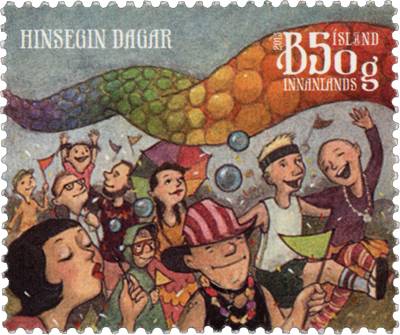
Ranjit Singh
India, Scott #436, 1941
Ranjit Singh (1780-1839) was the first Maharaja of the Sikh Empire, which ruled the northwest Indian subcontinent in the early half of the 19th century. He fought his first battle alongside his father at age 10. He fought several wars to expel Afghans in his teenage years and was proclaimed "Maharaja of the Punjab”: at age 21. His reign introduced reforms, modernization, investment in infrastructure, and general prosperity. Ranjit had as many as 20 wives and maintained both male and female concubines.
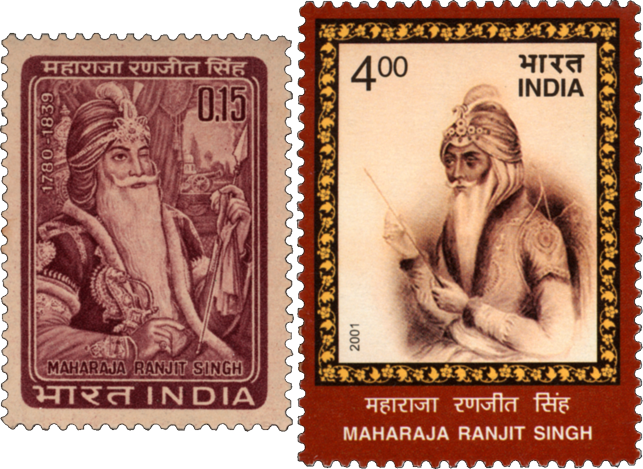
Amrita Sher Gil
India, Scott #795
From Budapest, Amrita Sher-Gil (1913-1941) moved with her family to Summer Hill, Shimla, India. She went to Paris to study painting at the École des Beaux-Arts. While there, her correspondence revealed same-sex affairs. Her painting, Young Girls, was exhibited at the 1933 Paris Salon, resulting in her becoming the youngest ever to be chosen Associate of the Grand Salon of Paris. She returned to India to become a "pioneer" in modern Indian art, before her unexpected early death.
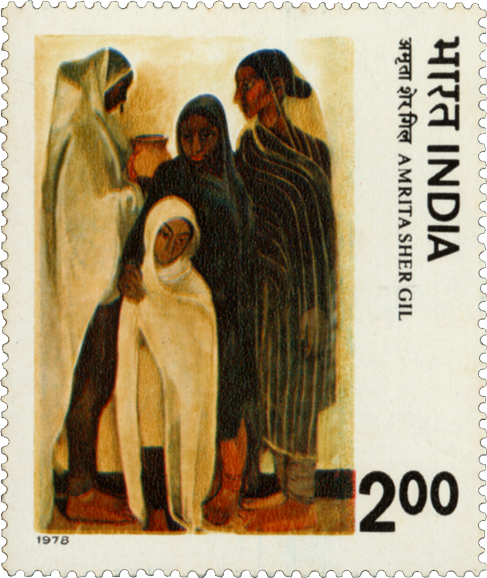
Khajuraho
India, Scott #1740
The Khajuraho group of monuments is a group of Hindu temples and Jain temples in Chhatarpur district, Madhya Pradesh, India. Most of the temples were built between 950 and 1050. They are a UNESCO World Heritage Site famous for their erotic sculptures. Several sculptures depict same-sex sexual contact.
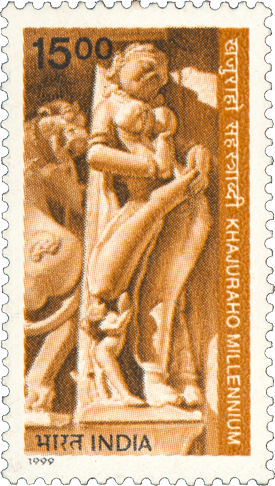
Hafez
India, Scott #2070b
Hafez (c. 1325 – 1390) was a Persian lyric poet born in Shiraz. His collected works are regarded by many Iranians as the pinnacle of Persian literature. He wrote ghazals, a form of love poem or ode, considered an ideal style for expressing the ecstasy of divine inspiration from love, wine, and freedom from restraint. Several of his poems are addressed to youths where the beloved is male.
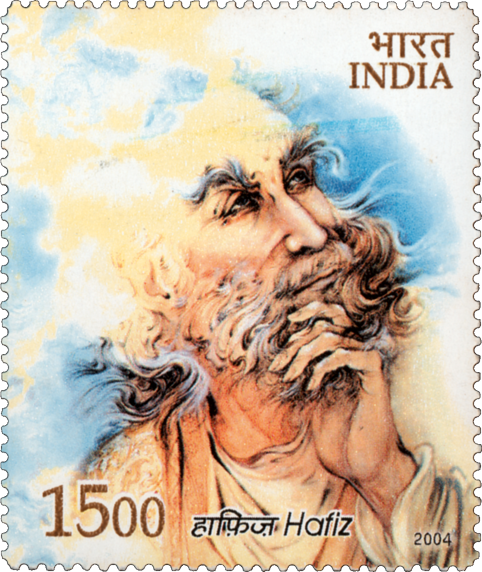
Oscar Wilde
Ireland, Scott #479, #1232
Oscar Fingal O'Flahertie Wills Wilde (1854-1900) is best known for his wit and flamboyance, and his literary efforts, with his novel The Picture of Dorian Gray and the play The Importance of Being Ernest his most lasting legacies. His criminal conviction for "gross indecency" and subsequent imprisonment led to his early death at age 46 in France, where he was buried. (Click on images to see more Oscar Wilde stamps)
Micháel Liammóir
Ireland, Scott #1165
Micheál Mac Liammóir (1899-1978) was born in Kensal Green, London, and made his first appearance on the stage in 1911. He studied painting at the Slade School of Art, but left to travel overseas and avoid conscription. He changed his name to appear Irish, joined his brother-in-law's acting company tour of Ireland in 1924, and met his partner and lover, Hilton Edwards. They moved to Dublin and co-founded the Gate Theatre in 1928. Liammóir's sets and costumes were key to the Gate's success. He portrayed Iago in Orson Wellesὑ 1952 film, Othello, and narrated the 1963 Oscar®-winning hit film, Tom Jones.
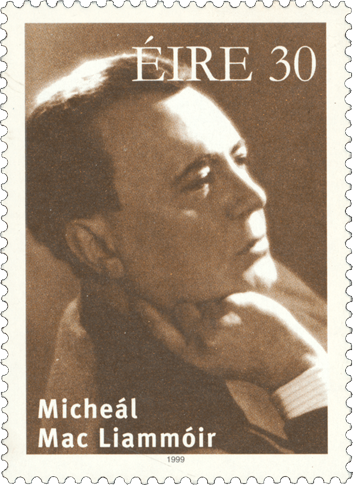
Francis Bacon
Ireland, Scott #1835-36
Born in Dublin to British parents, Francis Bacon (1909-1992) was shy, enjoyed dressing up, and had an effeminate manner, for which his father had him horsewhipped by grooms. He lived briefly in Berlin and Paris before moving to London to work as an interior designer. His first painting to get public attention, Crucifixion, was not a success in 1933. His Three Studies for Figures at the Base of a Crucifixion caused a sensation when exhibited in 1945. By the 1970s, he was introduced as Britain’s "greatest living painter." His early relationships had been with older and tumultuous men until he met the younger George Dyer in 1963, who sadly descended into alcoholism. (click on image to see the accompanying souvenir sheet, Scott #1836, in a new window)
Brendan Behan
Ireland, Scott #2026
Brendan Behan (1923-1964) was a poet, short story writer, novelist, and playwright born in Dublin. He was introduced to alcohol at a young age. He was a volunteer in the Irish Republican Army and served time in a youth offender prison in the United Kingdom and in an Irish prison. Behan's first play, The Quare Fellow, which includes a sympathetic portrayal of a homosexual man, appeared in 1954. The Hostage, his English-language adaptation of his 1958 play, An Giall, brought him international success. His autobiographical novel, Borstal Boy, was published in 1958, becoming a worldwide best-seller. He married Beatrice Salkeld in 1955, and his lover in New York was Peter Arthurs.
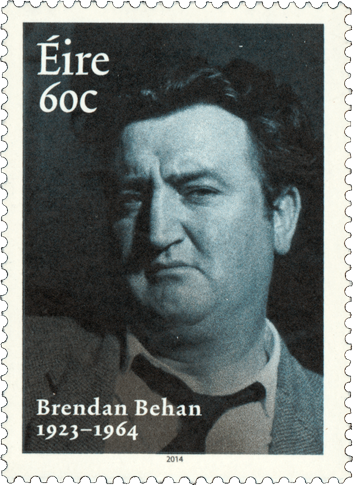
Eileen Gray
Ireland, Scott #2085-88
Eileen Gray (1878-1976) was an Irish-born and French-based architect and furniture designer. Born Kathleen Eileen Moray Smith, after the death of a maternal uncle in 1895 she became the 19th Baroness Gray and was known as Eileen Gray thereafter. Gray's art education began in London in 1900, but she moved to Paris in 1902 then returned to London a few years later to be with her ailing mother. By 1907, she was back in Paris, training with Seizo Sugawara in the art of lacquer furniture; both left France after the beginning of the World War I. Returning to Paris in 1917, she soon opened her own shop. Gray and Jean Badovici had a romantic relationship. Badovici encouraged Gray's growing interest in architecture, resulting in the modernist E-1027 villa, built in the south of France near Monaco. Badovici and Gray split in 1931, and Gray designed and built another house nearby. Gray was bisexual, mixing in the lesbian circles of the time, being associated with Romaine Brooks, Loie Fuller, Marie-Louise Damien, and Natalie Barney. Her intermittent relationship with the singer Damien ended in 1938.

Patrick Henry Pearse
Ireland, Scott #2107b
After his execution, Patrick Henry Pearse (1879-1916) was seen by many as the embodiment of the Irish quest for independence. He grew up surrounded by books where he promised God that he would dedicate his life to Irish freedom from British rule. A schoolmaster and an advocate of the suppressed Irish language, his Irish Volunteers joined the smaller Irish Citizen Army of James Connolly and 200 women of Cumann na mBan, in seizing key locations in Dublin on Easter Sunday in 2016. In front of the main post office in Dublin, he proclaimed an Irish Republic. After six days of fighting, he ordered a surrender and was executed the following month. His lack of sexual interest in women has been speculated by some psychologists as due to Asperger's syndrome. Other historians and biographers have noted that his interest in boys and extracts from some to his poetry indicate he was not asexual. Pearse shows up on two other Irish stamps, released in 1966 (Scott #209) and 1979 (Scott #460).

Kathleen Lynn and Elizabeth O'Farrell
Ireland, Scott #2107g
Kathleen Lynn (1874-1955), shown with Elizabeth O'Farrell (1883-1957) on a 2016 Irish issue noting the centenary of the failed Easter Uprising for Irish independence, was chief medical officer for the Irish Citizen Army. She met Madeleine ffrench-Mullen in 1913 and together they founded St. Ultan's Hospital in 1919, living together until ffrench-Mullen's death in 1944. Lynn died in 1955. O'Farrell was a nurse along with Julia Grenan during the Easter Rising. O‘Farrell delivered the surrender along with Pearse, depicted on another stamp in the 2016 issue. A photograph was taken though she had taken a step back. Her feet were airbrushed from the photo. She and Grenan are buried next to each other in Glasnevin Cemetery, Dublin, Ireland.
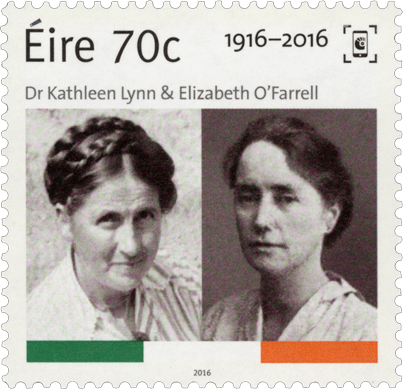
Roger Casement
Ireland, Scott #2107p
Diplomat and Irish revolutionary Roger Casement (1864-1916) worked for Henry Morton Stanley in the Congo, where he met Joseph Conrad. He joined the Colonial Service before working for the British Foreign Office as consul. Commissioned by the Balfour Government, he produced the hugely influential 1904 Casement Report, detailing human rights violations in the Congo Free State. Sent to Brazil, Roger reported in 1910 on abuses against natives in Putumayo, Peru. He was knighted in 1911 for these investigations. Retired from consular service, he helped form the Irish Volunteers in 1913. Hoping to recruit an Irish Brigade from Irish prisoners of war, he traveled to Germany where he helped secure arms that were later intercepted at sea. Three days before the 1916 Easter Rising, he arrived back in Ireland via German U-boat. He was shortly discovered and arrested before he was charged, tried, and finally executed in August 1916. While at trial, the prosecution produced Casement's diaries from 1903, 1910, and 1911, rife with detailed homosexual activity. He also appears on Irish stamps issued in 1966 (Scott #214-15) as well as another 2016 stamp not shown (Scott #2099).
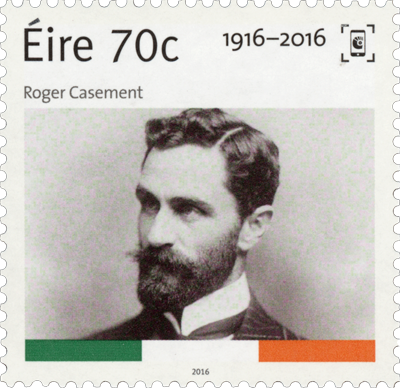
Iris Murdoch
Ireland, Scott #2245
Dublin, Dame Iris Murdoch (1919-1999) was awarded a first-class honors degree from Somerville College, Oxford, in 1942. She studied philosophy postgraduate at Newnham College, Cambridge, before becoming a fellow of Saint Anne's College, Oxford, teaching philosophy until 1963. She married John Bayley, a man who thought that sex was "inescapably ridiculous." Iris had multiple affairs with both men and women. She wrote more than 25 novels.
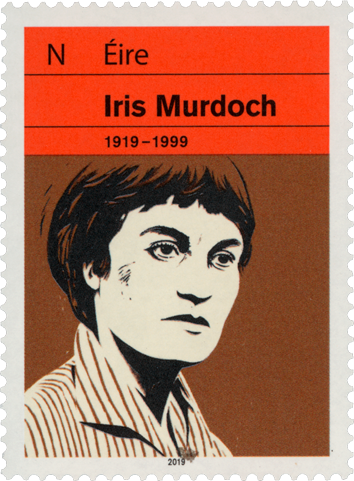
Sarah Purser
Ireland, Scott #2278
Sarah Purser (1848-1943) attended the Institution Evangélique de Montmirail, Switzerland, learning fluent French, and then the Dublin Metropolitan School of Art. She studied at the Académie Julian in Paris where she met lifelong friend, painter Louise Catherine Breslau. She worked mostly as a portraitist and regularly exhibited. She financed a stained-glass cooperative and ran it from 1903 until 1940. In 1924, Sarah became the first female Member of the Royal Hibernian Academy. For many years, she hosted a Tuesday afternoon "salon" at her home on the banks of the Grand Canal.
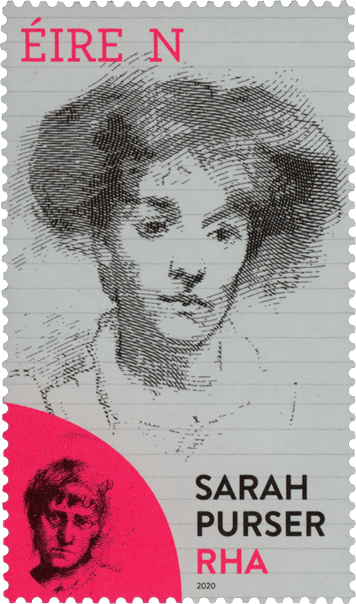
Patrick Scott
Ireland, Scott #2299
Patrick Scott (1921-2014) was born in Kilbrittain, County Cork, and trained as an architect. He had his first exhibition in 1944 and became a full-time artist starting in 1960. He was best known for his gold paintings, abstracts of geometrical forms incorporating gold leaf. In 2013, Scott wed his companion of 30 years, Eric Pearce.

Sinéad O'Connor
Ireland, Scott #2317
Sinéad O'Connor (born 1966) is an Irish singer-songwriter whose first album, The Lion and the Cobra, caused a sensation in 1987. Her second album featured her international breakthrough hit, "Nothing Compares 2 U." Protesting the cover-up of Catholic priest sexual abuse, she ripped up a photograph of Pope John Paul II during a 1992 live appearance on the American Saturday Night Live TV progam. Sinéad has married four times, and in 2002, she said that while most of her sexual relationships have been with men, she has had three relationships with women. She converted to Islam in October 2018.
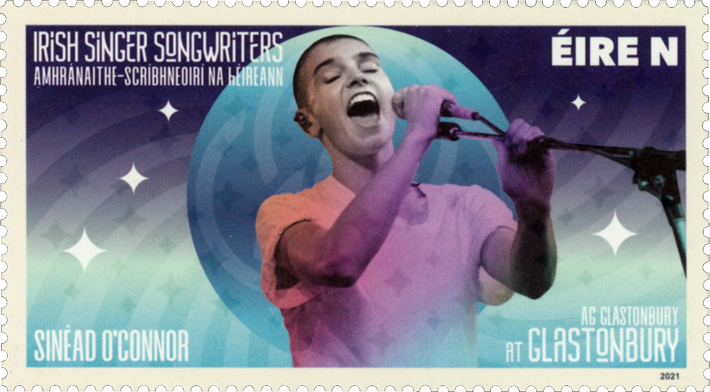
Lady Jane Wilde
Ireland, Scott #2302
Lady Jane Wilde (1821-96) married Sir William Wilde in 1851. Her younger son, Oscar Wilde (1854-1900), became a prolific and famous writer. An Irish nationalist, feminist, multilinguist, translator and staunch advocate of women's rights, she came to prominence in 1848 after writing an unsigned editorial. In January 1896 Lady Wilde contracted bronchitis and, d ying, asked for permission to see Oscar, who was in prison, having been convicted of gross indecency with men. Her request was refused. It was claimed an apparition of her appeared in Oscar's prison cell as she died at her home.
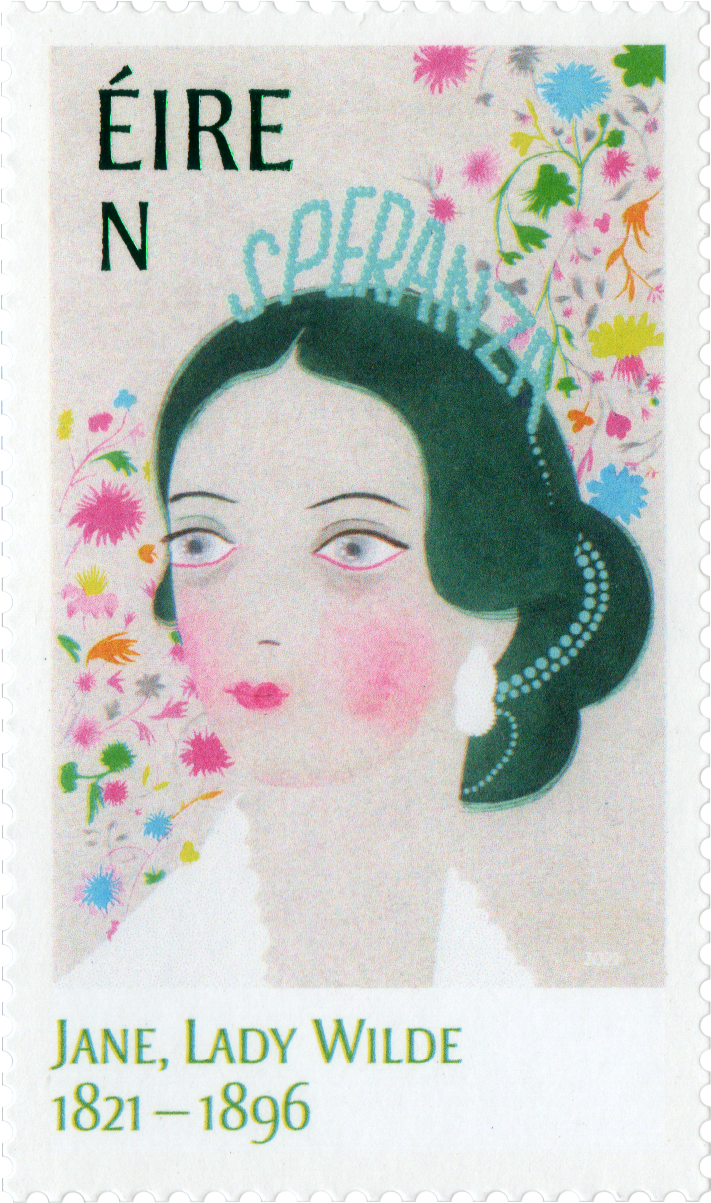
Ireland Pride
Ireland, Scott #2311-13, 2313a
The Irish post office issued on June 10, 2021, a five-stamp booklet celebrating the Pride movement. Within are four domestic rate stamps, two featuring the universal term "Pride," and two having the Irish translation of the word – "Bród" – to recognize the distinct Irish Pride movement as part of an international grouping. A fifth stamp for the international rate also has the word "Pride." (Click on image to see a booklet with all the stamps)
Kellie Harrington
Ireland, Scott #2341
2020 Olympic lightweight boxing gold medal winner Kellie Harrington (born 1989) was one of 180 openly gay athletes at the 2020 Olympic games (held in 2021), the Dublin native medaled at a number of women's boxing competitions, including a gold in the lightweight division at the 2018 Women's World Boxing Championship. She has been in a relationship with Mandy Loughlin since 2009 after meeting her through boxing; they married on April 8, 2022.

Neil Jordan
Ireland, Scott #2345
Irish film director, screenwriter, novelist and short-story writer Neil Jordan (born 1950) won a Best Original Screenplay Oscar® for The Crying Game (1992), which like Breakfast on Pluto (2005), features transgender characters. Unconventional sexual relationships are a recurring theme in many of his other works, including mainstream films like Interview with a Vampire (1994), whose principal characters are obviously gay.
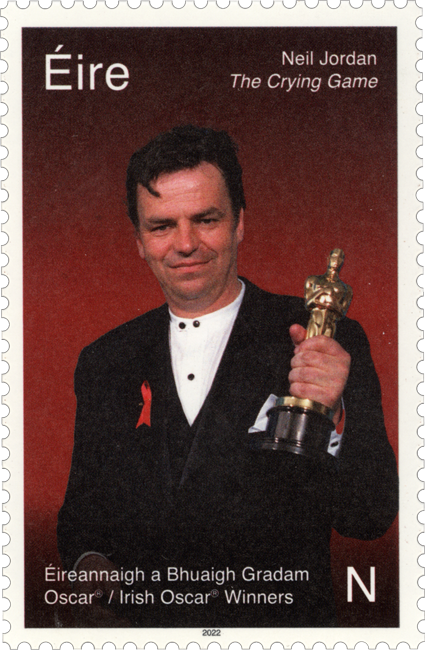
Yehuda Poliker
Israel, Scott #1908h
Yehuda Poliker (born 1950) is an Israeli singer, songwriter, musician, and painter. He was lead vocalist for the band Benzene before launching his solo career with the album, Eynaim Sheli (My Eyes) , consisting of well-known Greek songs translated to Hebrew. His third album, Efer VeAvak (Dust and Ashes) , dealing with the Holocaust, is still considered one of the most acclaimed Israeli albums of all time. In 2010, Poliker appeared in a television documentary in which he revealed how he came out to his family at the age of 27. The broadcast occurred at about the same time as the release of his album, Alhava Al Tnai (Conditional Love) , containing songs about relationships and love for men and the death of his mother.

Julius Caesar
Italy, Scott #222A
Julius Caesar (100-44 BC) became head of his family at age 16. After Sulla won a civil war, Julius joined the army to serve in Asia, in Cilicia, at the Siege of Mytilene, and to Bithynia to secure the assistance of King Nicomedes IV's fleet. According to Cicero, the two had a sexual affair. Upon return to Rome, he was elected military tribune, then quaestor, served as praetor, and was appointed to govern Hispania Ulterior. He was acclaimed imperator in 60, but he preferred to be elected consul, the most senior magistracy in the republic. He won in 59. He formed the First Triumvirate, an informal alliance, with Pompey and Crassus. He conquered Gaul and marched on Rome, after Crassus died, to fight Pompey. Julius won and was appointed dictator, then elected consul. He got involved in an Egyptian civil war to support Cleopatra, then was appointed dictator for ten years. He named Octavian as his heir and presided over reforms before his assassination in the Senate.

Torquato Tasso
Italy, Scott #276
Born in Sorrento to noble parents, Torquato Tasso (1544-1595) was educated by the Jesuits, and was already famous at the age of eight due to his precocity of intellect and religious fervor. In Rome, he became close to Francesco Maria della Rovere, heir to the duke of Urbino, and pursued aesthetic and literary studies. He was sent to study law at Padua, but instead, he produced Rinaldo, a twelve-canto epic poem. He entered the service of Cardinal Luigi d'Este at Ferrara before taking service under Duke Alfonso II of Ferrara. In 1574, he completed his classic epic poem, Gerusalemme liberate (Jerusalem Delivered), a highly imaginative version of combat during the Siege of Jerusalem of 1099 during the First Crusade. Torquato had a relationship with courtier Orazio Orlando and fell in love with Orazio Ariosto, a much younger man. After apparently acting peculiarly, he was eventually sent to the madhouse of St. Anna, where he wrote dialogues on philosophical and ethical themes instead of poetry.

Catullus
Italy, Scott #529
A Latin poet of the late Roman Republic, Catullus (circa 84–54 BC) wrote chiefly in the neoteric style, about personal life rather than classical heroes. He was born in Verona, Cisalpine Gaul, and spent his young adult years in Rome. Many of his poems address love to "Lesbia," possibly identified as the married Clodia Metelli, who had several other simultaneous suitors. He also wrote explicitly sexual love poems to Juventius.
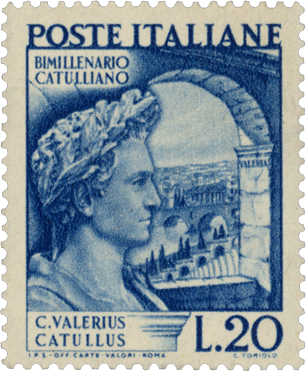
Vincenzo Bellini
Italy, Scott #597
Opera composer Vincenzo Bellini (1801-1835) was known for long-flowing melodic lines. His works still performed today include Il pirate, I Capuleti e I Montecchi, La sonnambula, Norma, and I puritani. He met fellow student Francesco Florimo at the Naples Conservatory. Their correspondence and passionate friendship lasted Vincenzo's lifetime. He also had several affairs with women, including Maddalena Fumaroli and the married Giuditta Turina.

Vincenzo Gemito
Italy, Scott #617
Neapolitan native Vincenzo Gemito (1852-1929) was abandoned to an orphanage and later apprenticed to a painter and sculptor and demonstrated dexterity and inventiveness, for which he would become famous. At only 16, he created the terracotta Il Giocatore (The Player), one of his most famous works. He moved to Paris and his Napolitan Fisherboy triumphed at the 1877 Paris Salon. He returned to Capri, married, and became a recluse for a couple decades, during which he concentrated on drawing before returning to sculpture. Several of his terracottas feature nude or half-clothed adolescents and many of his drawings display blatant homoeroticism.
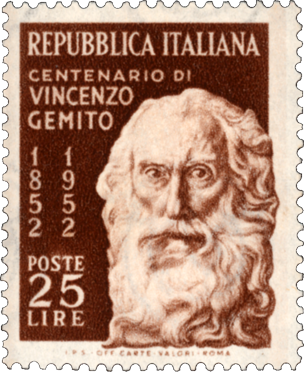
Arcangelo Corelli
Italy, Scott #624
Arcangelo Corelli (1653-1713) was an Italian violinist and composer of the Baroque era. His music was key in the development of the modern genres of sonata and concerto and in establishing the preeminence of the violin. Corelli was a favorite of Cardinal Pietro Ottoboni, living in the Cardinal’s palace in Rome. He also had a long-term relationship with violinist Matteo Fornari.

Ovid
Italy, Scott #721
Ovid (43 BC – 17 AD) was a Roman poet who was a contemporary of the older Virgil and Horace, with whom he is often ranked as one of the three canonical poets of Latin literature. He spent the first 25 years of his career writing poetry in elegiac meter with erotic themes. By 8 AD, he completed Metamorphosis, a 15-book continuous mythological narrative written in the meter of epic. It is an important source of Greek mythology with LGBTQ themes.
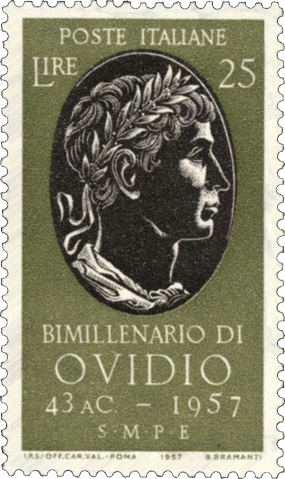
Cicero
Italy, Scott #730
Cicero (106-43 BC) was a Roman statesman, lawyer, scholar, philosopher, and Academic Skeptic. He is considered one of Rome's greatest orators and prose stylists. His influence on the Latin language was immense. Petrarch's rediscovery of Cicero's letters is often credited for initiating the 14th-century Renaissance in public affairs, humanism, and classical Roman culture. His marriage to Terentia was one of convenience. Some scholars believe that content in Cicero's letters indicate he had a long-term homosexual relationship with his slave Tiro. Some of his poems reference kissing Tiro.

Antonio Canova
Italy, Scott #722-24
Often regarded as the greatest of the Neoclassical artists, Antonio Canova (1757-1822), was born in Possagno, Venetian Republic, and was raised by his stonemason and sculptor grandfather. Before the age of ten he was making models in clay and carving marble. He studied at the Accademia di Belle Arte di Venezia before Senator Giovanni Falier commissioned pieces from him for the Senator's garden. The works brought Canova renown, and the Senator's son became Canova's intimate friend for life. By 1800, he was the most celebrated artist in Europe.
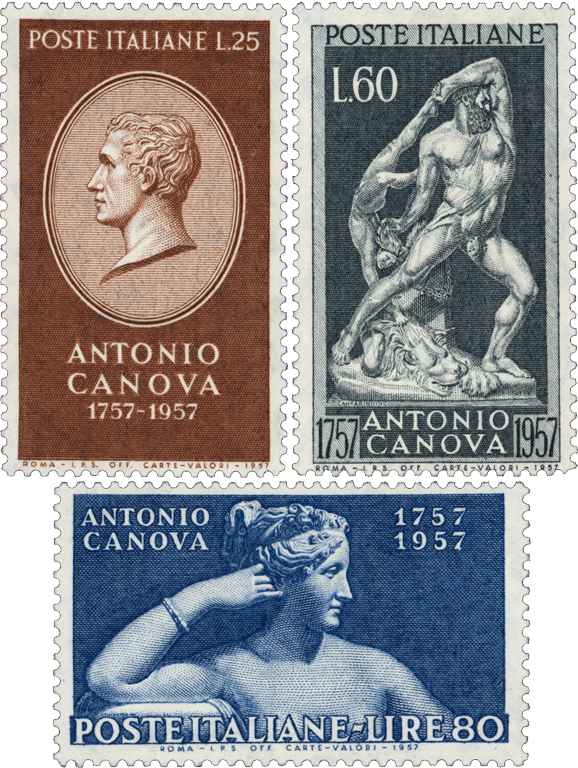
Giulio Romano
Italy, Scott #794-95
Giulio Romano (1499-1546) was born in Rome, started as a young assistant in Raphael's studio, and became Raphael's favorite, named in Raphael’s will as one of two beneficiaries. He painted part of the Fire in the Borgio fresco in the Vatican and created pornographic drawings of verses by Pietro Aretino. After Raphael's death he helped complete the Vatican's Transfiguration. He moved to Mantua, where he executed his best-known work, the architecture and frescos of suburban Palazzo Te.
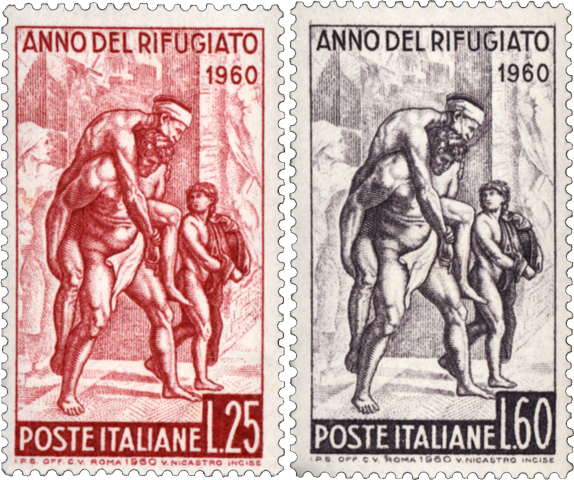
Donatello
Italy, Scott #941
Florentine native Donatello (1386-1466) met the older architect Filippo Brunelleschi in 1401, with whom he may have had a romantic relationship. Filippo tutored him in goldsmithing and sculpture. He went on to develop a complete Renaissance style in sculpture, working with stone, bronze, wood, clay, stucco, and wax. Donatello's most famous work is his bronze David. His attraction to men was well known, and his attraction to young men is well documented.
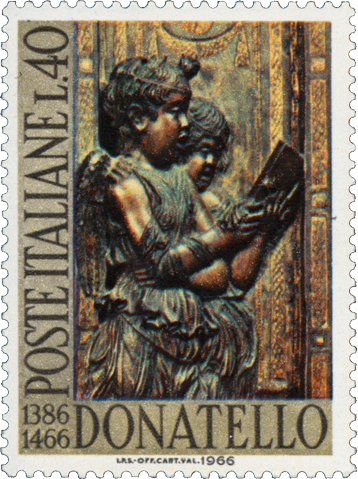
Niccoló Machiavelli
Italy, Scott #1002
Niccoló Machiavelli (1469-1527) was a diplomat, philosopher, and writer, best known for his work Il Principe (The Prince) in 1513. He has been called the father of modern political philosophy and political science. He was born in Florence and served as a senior official in the Florentine Republic. Machiavelli was an intimate of Piero Soderini. At the age of 32, he married Marietta Corsini, and his correspondence with Francesco Vettori revealed his falling in love with a young man.
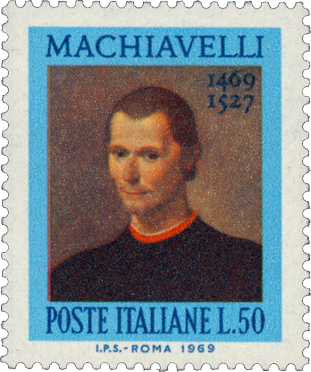
Sandro Botticelli
Italy, Scott #1118
Sandro Botticelli (1445-1510) was an Italian painter of the Early Renaissance. He was born in Florence, initially trained as a goldsmith, and apprenticed with painter Fra Filippo Lippi. By 1470, Sandro had his own workshop. In 1481, Pope Sixtus IV summoned him and others to fresco the walls of the Sistine Chapel, where Sandro contributed three of the fourteen large scenes. He returned to Florence to paint his masterpieces, Primavera (circa 1482) and The Birth of Venus (circa 1485). In 1502, he was accused of sodomy with one of his assistants.
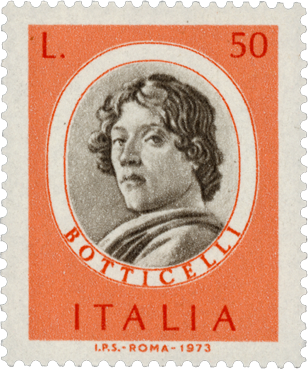
Raphael
Italy, Scott #1127
An Italian painter and architect of the High Renaissance, Raphael (1483-1520) was born in Urbino, Marche region, and apprenticed with painter Pietro Perugino. His first documented work was the Baronci Altarpiece. He was much in demand and led a "nomadic" life, though he spent a great deal of time in Florence. In 1508, he moved to Rome, commissioned by Pope Julius II to fresco the private library at the Vatican Palace, the first of three "Raphael Rooms." In 1514, he was named architect of the new Saint Peter's, though most of his work was altered or demolished after his death. He lived with his two favorite students, Giulio Romano and Gianfrancesco Penni, to whom he left his fortune.
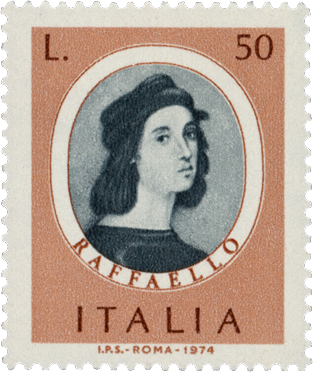
Pietro Aretino
Italy, Scott #1267
Pietro Aretino (1492-1556) grew up in Perugia before being sent to Rome, where the rich banker Agostino Chigi took him under his wing. When the pet elephant of Pope Leo X died, he wrote a satirical fictitious pamphlet that cleverly mocked the leading political and religious figures in Rome. It was a great success that started his career as a famous satirist and writer, ultimately to be known as "the Scourge of Princes." His 16 ribald sonnets written to accompany a series of pornographic drawings by Giulio Romano led to scandal and his flight from Rome to Venice. He was openly gay, declaring himself "a sodomite" since birth.
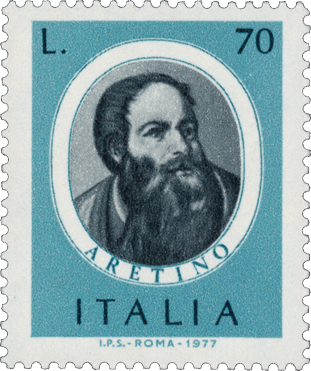
Virgil
Italy, Scott #1491
Poet of the ancient Rome's Augustan period, Virgil (70-19 B.C.) wrote three of the most famous poems in Latin literature: the Eclogues, the Georgics, and the epic Aeneid. He is traditionally ranked as one of Rome’s greatest poets. Homosexual love (Corydon's love for Alexis and Virgil's love for youth Alexander) and attraction to people of any gender are discussed in the Eclogues. Historian Suetonius names Virgil's lovers.

Horace (Quintus Horatius Flaccus)
Italy, Scott #1930
Horace (65-8 BC) was the leading Roman lyric poet during the time of Augustus (earlier, Octavian). He can be considered the world's first autobiographer. He was born in Venusia (now Venosa in Basilicata) and educated in Rome and Athens, enrolling in The Academy. He became an officer in the republican army, which was defeated at the Battle of Philippi, then he took a civil service position in the Treasury and started to write his hexameter Satires and his insulting and obscene iambic Epodes. Gradually, with the help of Virgil, he was accepted by Octavian's supporters, often accompanying Maecenas, Octavian's right-hand man. He wrote of his love for youths, including a love poem addressed to Lyciscus, and of easygoing, matter-of-fact bisexuality.
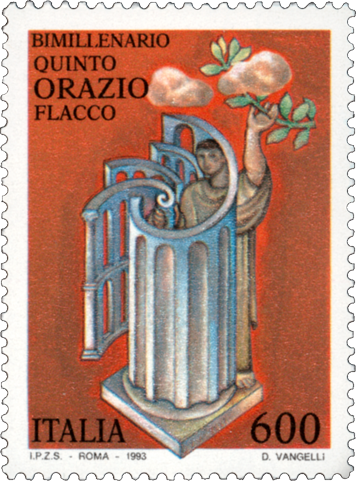
Rudolph Valentino
Italy, Scott #2049
Rudolph Valentino (1895-1926) was born in Castellaneta, Apulia, and emigrated to the United States in 1913. He worked as a taxi dancer in New York before heading to Los Angeles where he became roommate to actor Norman Kerry. He impulsively married Jean Acker while she was in the midst of a lesbian triangle. The marriage was unconsummated. During a trip to New York, he met Paul Ivano and got his star-making part in 1921's The Four Horsemen of the Apocalypse. During his next film, he met his next wife, bisexual Natacha Rambova. The Sheik solidified his reputation as the "Latin lover". Rudolph wrote explicitly of a 1924 homosexual experience in his private journal.
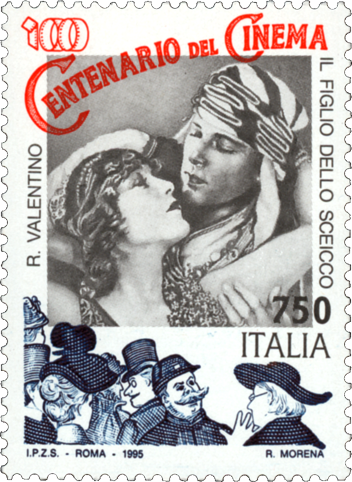
Leonardo da Vinci
Italy, Scott #2200
Leonardo da Vinci (1452-1519) was an Italian polymath of the High Renaissance who was a painter, draughtsman, engineer, scientist, theorist, sculptor, and architect. He is among the greatest painters in the history of art and is often credited as the founder of the High Renaissance. He became known for his notebooks, which include drawings and notes on anatomy, astronomy, botany, cartography, painting, and paleontology. He made substantial, though unpublished, discoveries in anatomy, civil engineering, hydrodynamics, geology, optics, and tribology. He had no close relationships with women, and his most intimate relationships were with pupils and lifelong companions Salai and Francesco Melzi.

Giacomo Leopardi
Italy, Scott #2222
Giacomo Leopardi (1798-1837) is considered the greatest Italian poet of the 19th century and one of the principals of literary romanticism. He was born in Recanati in the Marche, part of the Papal States. He had a fragile physical constitution, and during his teen years, he studied constantly. Leopardi lived briefly in Rome, Milan, Bologna, Florence, and Pisa, before returning to Recanati and finally, Naples. He had intimate friendships with men, especially writer Antonio Ranieri.
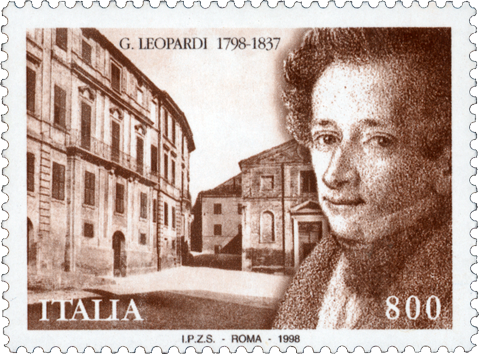
Benvenuto Cellini
Italy, Scott #2379
A goldsmith, sculptor, draftsman, soldier, musician, and artist, Benvenuto Cellini (1500-1571) also wrote poetry and a famous autobiography. He was one of the most important artists of Mannerism. His most famous works include the part-enamelled gold Cellini Salt Cellar and the bronze Perseus with the Head of Medusa. He was accused multiple times of sodomy, including Domenico di Ser Giuliano da Ripa and Fernando di Giovanni di Montepulciano), during his life.
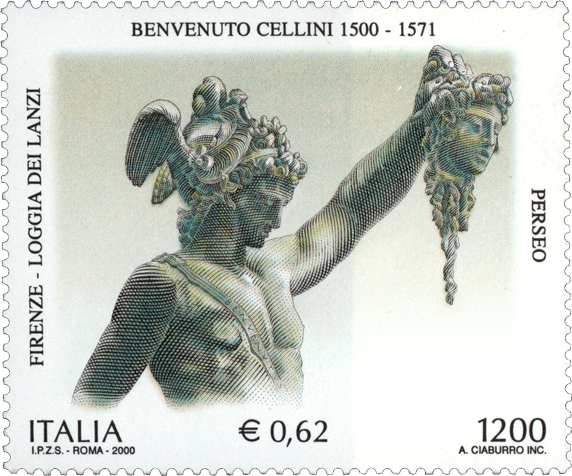
Emporer Nero of Rome
Italy, Scott #2419
Nero (37-68) was the fifth Emperor of Rome from 54 until his suicide. During his infamous reign he had many people killed, including his stepbrother Britannicus, his mother Agrippina, his first wife Claudia, and his tutor Seneca. To end rumors that he started the Great Fire of Rome in 64, he fixed blame on Christians, initiating the only large-scale persecution of Christians during the first century A.D. The fire cleared space for him to build his extravagant palace, the Domus Aurea (Golden House). In 64, he was solemnly given in marriage to a male slave named Pythagoras, complete with bridal veil, witnesses, dowry, marriage bed, and wedding torches. After his second wife Poppaea died (possibly as the result of a kick by Nero while she was pregnant) in 65, he had a Greek ex-slave boy named Sporus, who closely resembled Poppaea, castrated. Nero married him in a solemn ceremony, properly with contract, dowry, bridal veil, and public celebration, then treated the eunuch as his empress, complete with fond kisses in public.
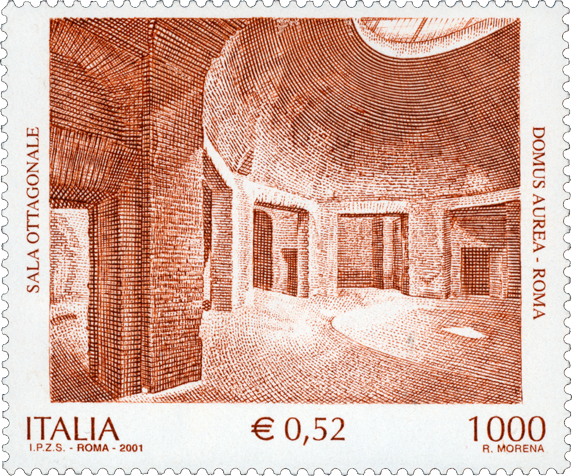
Dalla
Italy, Scott #3599
Lucio Dalla (1943-2012), who became one of Italy's most popular singers, played clarinet in a Bologna jazz band and made his first record in 1961 with the Second Roman New Orleans Jazz Band. His first vocal hit was "4 Marzo 1943," released in 1970. His song, "Caruso," released in 1986, has been covered by international artists like Luciano Pavarotti, Julio Iglesias, and Andrea Bocelli. He was made a Grand Officer of the Order of Merit of the Italian Republic in 2003. Dalla kept his homosexuality private, which was revealed at the end of a funeral mass by his long-term partner Marco Alemanno, creating shock among his fans and a debate about attitudes towards homosexuality in the country.
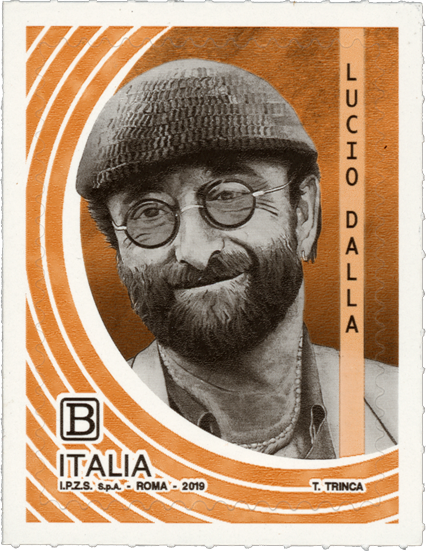
Matsuo Basho
Japan, Scott #1783-86
Matsuo Basho (1644-1694), the most famous poet of the Edo period in Japan, is recognized as the greatest master of haiku. Born near Ueno, in Iga Province (now western Mie Prefecture), the first extant poem by him was published in 1662. He wrote, "there was a time when I was fascinated with the ways of homosexual love." Biographers note that he was involved in same-sex affairs throughout all his life and that among his lovers were several of his disciples. The Narrow Road to the Interior (Oku no Hosomichi), considered his finest achievement was finished in 1694 and published in 1702.
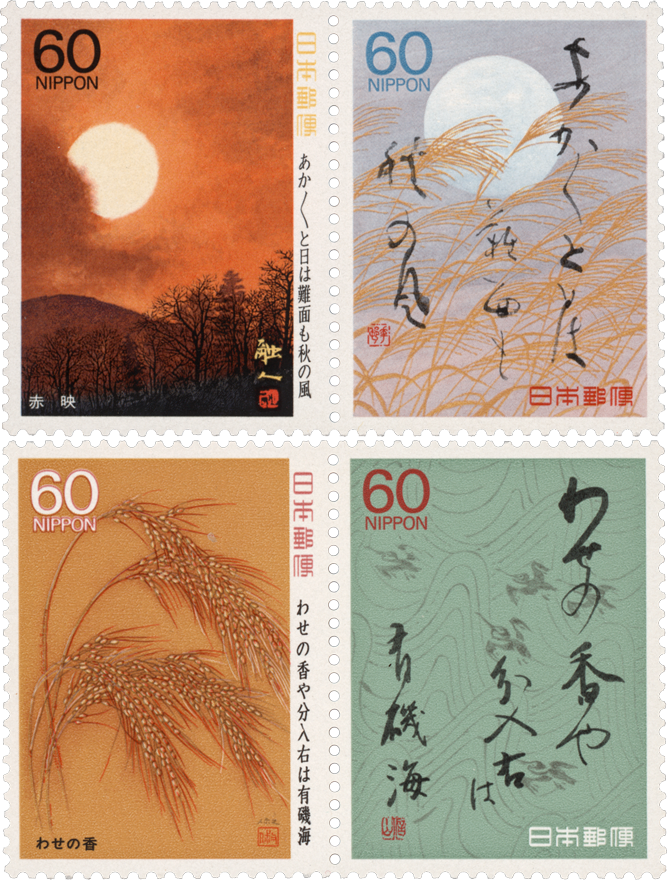
Li Bai
KyrgyzExpress Post, Scott #55
Li Bai (701-762) was a Chinese poet acclaimed as a genius and as a romantic figure who took traditional poetic forms to new heights. He was born in Suyab, present-day Kyrgyzstan, and spent his childhood in Jiangyou, near Chengdu, Sichuan. He lived a mostly restless life, wandering China, loving drink. He is known to have married four times. He was summoned to the court in Chang’an by Emperor Xuanzong to be employed as a translator and at the Hanlin Academy. He left the court, wandered for 10 years, then shared a room with poet Du Fu in 744 and 745. Late in life, he was arrested and sentenced to exile, but was reprieved before reaching his destination. Due to the content of his poems, he was a favorite poet among homosexual reading clubs and social gatherings in post WWI Germany. (click on image to see a larger version in a new window)
Diversity
Liechtenstein, Scott #1803
In 2019, Liechtenstein and Switzerland jointly issued four stamps commemorating Social Diversity, including two stamps featuring Throng, by Luigi Olivadoti, which appears to depict a Pride gathering with a Rainbow Flag, created by Gilbert Baker.

Luxembourg Remembers
Luxembourg, Scott #1407b
In Nazi concentration camps, each prisoner wore a downward-pointing triangle cloth badge, or in the case of Jews, the Star of David (i.e. superimposed upward and downward triangles). The color of the badge identified the reason for imprisonment. Eventually a pink triangle designated for homosexual men, bisexual men, and transgender women. Lesbians, bisexual women, and transgender men, when imprisoned and identified as such, were classified as "asocial", designated with a black triangle. The stamp shown here is part of a Luxembourg set marking the end of World War II.
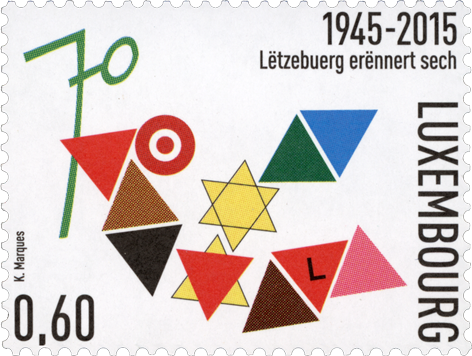
Equal Treatment
Luxembourg, Scott #1425
Gender equality and principles of equal treatment are principles of European law, with the Center for Equal Treatment being established in 2006 to support victims of discriminations on all grounds.
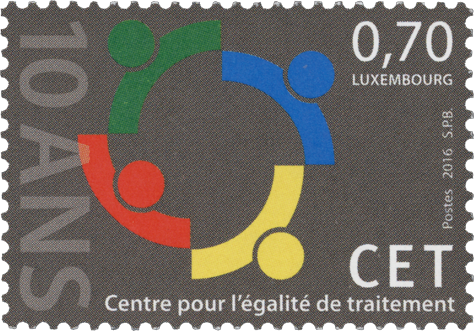
Sir James Brooke
Malaysia, Scott #1824
Sir James Brooke (1803-1868) was a British soldier and adventurer who ruled as the first White Rajah of Sarawak from 1841 until his death. He was born in Bandel near Kolkata, India. In 1819, he enlisted as an ensign in the Bengal Army of the British East India Company and was seriously wounded in the First Anglo-Burmese War in 1825. After he bought a 142-ton schooner, he arrived in Kuching in 1838 and helped end an uprising against the Sultan of Brunei. In gratitude, James was offered the governorship of Sarawak in 1841. He was granted knighthood in 1847. He had relationships with a Sarawak prince named Badruddin and with Charles T. C. Grant. He died eight months before the first Sarawak stamp appeared depicting him. (click on image to see a larger version in a new window)
Caravaggio
Malta, Scott #1297
Italian painter Michelangelo Merisi Da Caravaggio (1571-1610) was born in Milan and apprenticed to painter Simone Peterzano. In 1592, he moved to Rome after "certain quarrels" and the wounding of a police officer. He worked in the workshop of Pope Clement VIII's favorite artist, Giuseppe Cesari. Caravaggio's innovation was a radical naturalism that combined a close physical observation with tenebrism, a violent shift from light to dark. He shared rooms for years with his young model, Mario Minniti. In testimony during a 1603 libel suit, he acknowledged Giovanni Battista as a sexual partner. He was notorious for brawling and fled first to Naples, then Malta, where he painted in 1608 The Beheading of Saint John the Baptist replicated on the Malta stamp shown here. He escaped prison and went to Sicily before dying in Naples. (click on image to see a larger version in a new window)
Bernard Montgomery
Malta, Scott #1633a
orn in Kennington, Surrey, Bernard Montgomery (1887-1976) grew up in Tasmania, and attended the Royal Military College, Sandhurst. He was shot through the right lung and in the knee during World War I and after graduating from the Staff College, served in the Irish War of Independence. In 1925, in his first known courtship of a woman, he proposed to a woman 17 years younger. Instead, he married widow Elizabeth Carver in 1927. In 1942, he was given command of the 8th Army, leading them to victory at El Alamein. He was promoted to full general and led troops across Libya, Tunisia, Sicily, and into mainland Italy before commanding the 21st Army Group on D-Day. In 1944, he was promoted to field marshal. Biographers, including Baron Chalfont and longtime friend Nigel Hamilton, conclude that his homosexuality was repressed, the latter writing that Montgomery had "quasi love affairs" with boys and men.
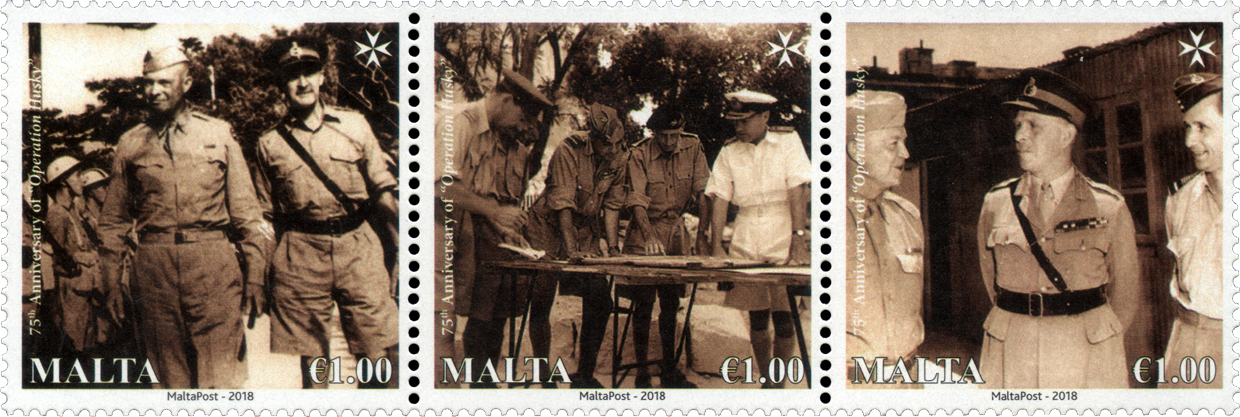
Ramon Navarro
Mexico, Scott #1440
Ramon Novarro (1899-1968) was born in Durango, Mexico, and accompanied his family to Los Angeles in 1913 to escape the revolution. He began his career in silent films in 1917, and his first major success was 1923's Scaramouche. His greatest success was starring in 1925's Ben-Hur. His career continued in the talkies, including starring with Greta Garbo in 1931's Mata Hari, and in television into the 1960s. He had romantic relationships with composer Harry Partch, journalist Herbert Howe, and Noël Sullivan.
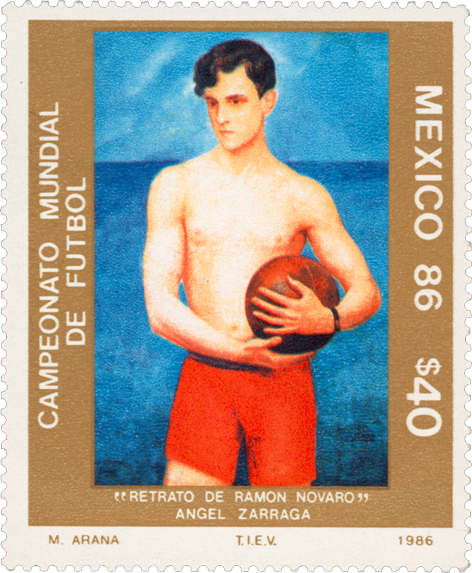
Frida Kahlo
Mexico, Scott #2228
Mexican artist Frida Kahlo (1907-1954), born Magdalena Carmen Frida Kahlo y Calderón, painted mainly folk-art style portraits or self-portraits inspired by the nature and artifacts of Mexico. Twice married to fellow artist Diego Rivera, both were ardent communists and Frida has a particular disdain for capitalist America, where both worked during the early 1930s. Frida's health was always fragile as were her marriages to Rivera; both pursued extra marital activities. She had numerous affairs, with Georgia O'Keeffe, Dolores Del Rio, Paulette Goddard, Josephine Baker, and Leon Trotsky being some better known names. Her artwork was largely ignored until being discovered in the late 1970s. The Mexican stamp was to be a part of an official joint issue with the U.S. Although the joint issue idea was aborted because of Kahlo's communist ties, the U.S. issued its stamp anyway. See the entry in the U.S. Stamp Gallery
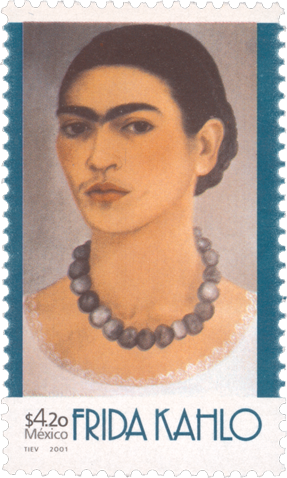
Juana Inés de la Cruz
Mexico, Scott #3187
Juana Inés de la Cruz (1648-1695) was a Mexican writer, philosopher, composer, and poet of the Baroque period, and Hieronymite nun. She was born near Mexico City, began studies early, and by the age of 17, she had garnered fame throughout New Spain for her literary accomplishments and for her responses to questions posed by a meeting of theologians, jurists, philosophers, and poets, called by the viceroy. She declined several proposals of marriage and entered the monastery of the Hieronymite nuns so she could study and write as she wished. She contributed both to early Spanish literature and the literature of the Spanish Golden Age. Her poems frequently expressed her desire for women.
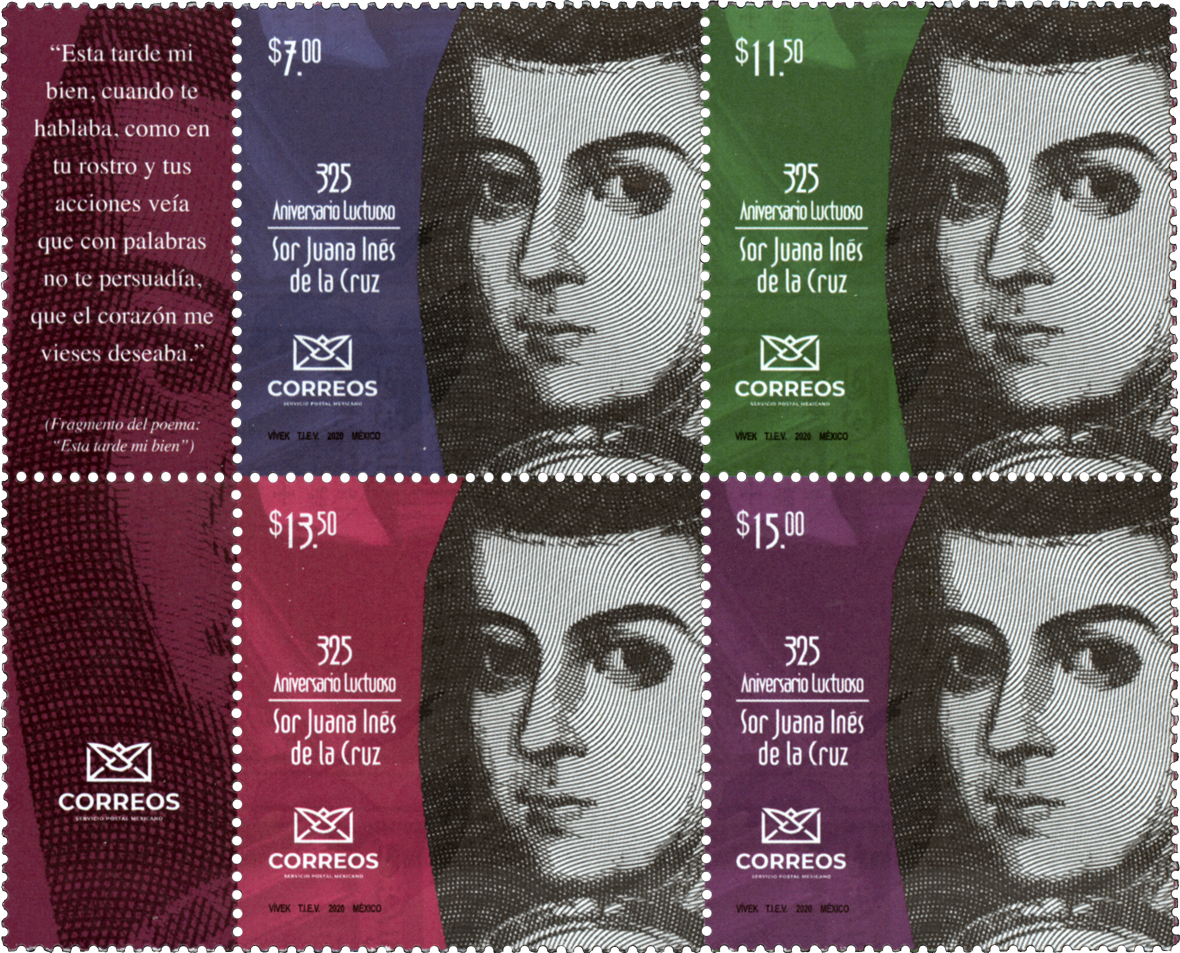
George Villiers
Monaco, Scott #1065
George Villiers, 1st Duke of Buckingham (1592-1628) was born in Brooksby, Leicestershire, and was educated for a courtier's life. At the age of 21, he caught the eye of King James I, and became Royal Cup-bearer. He became the King's (last) favorite and constant companion, advancing through the ranks of nobility, eventually made Duke of Buckingham in 1623. There is no evidence of a physical relationship, but Buckingham frequently reciprocated the King's affections in writing. As Lord Admiral and effective Foreign Minister, incompetent failures and widespread unpopularity led to his assassination; he was stabbed at a Portsmouth pub.
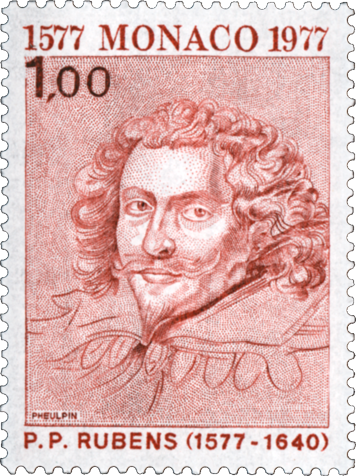
Bella Darvi
Monaco, Scott #3066
Polish born Bella Darvi (1928-1971) was educated in Paris, where she was jailed by the Vichy government during World War II. After the war, she married and moved to Monaco. There, she met Darryl and Virginia Zanuck who invited her to Hollywood, where she shared a room with Zanuck's daughter Susan. Bella took acting lessons and signed a contract with 20th Century Fox in 1953. Three disappointing Hollywood films were followed by productions in France and Italy. Zanuck left his wife for Bella but left her when he discovered Bella was bisexual. She very publicly dated women as well as men.
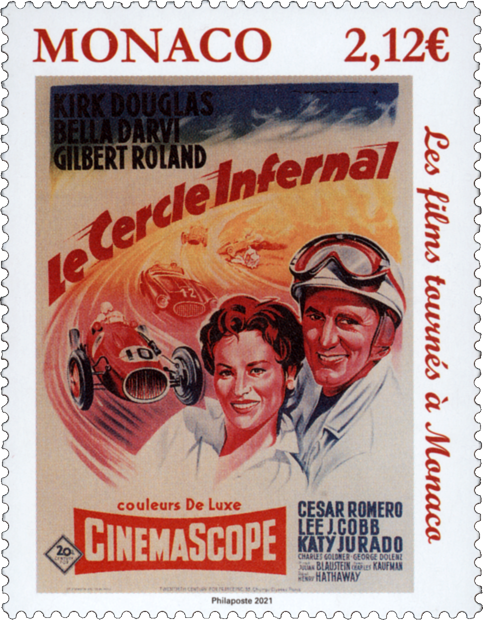
Anton Walbrook
Monaco, Scott #3067
Anton Walbrook (1896-1967) was born in Vienna, studied with director Max Reinhardt, and made his stage debut before joining the German army in World War I, where he was captured in France. After the war, he grew his reputation with theatre performances in Munich, Dresden, and Berlin, before appearing in films in Berlin. By the mid-1930s, he was probably the Number 1 star in German cinema. After going to Hollywood to reshoot dialogue for a film, he decided to settle in the United Kingdom, possibly to avoid persecution under Germany's Nuremburg Laws. He is probably best known for his roles in The Life and Death of Colonel Blimp and The Red Shoes. Walbrook kept his homosexuality private.
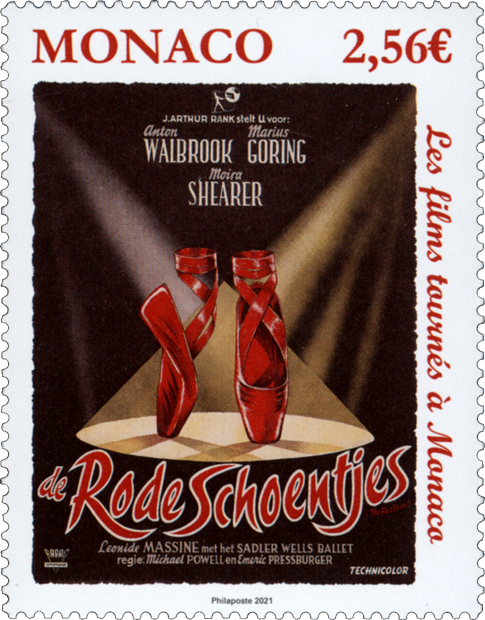
André van Duin
Netherlands, Scott #1482c
André van Duin (born 1947) is a Dutch comedian, actor, singer-songwriter, author, television presenter, television director, television producer, and screenwriter. With a career spanning seven decades, he is one of the Netherlands' best-known entertainers. He married Martin Elferink in 2006.
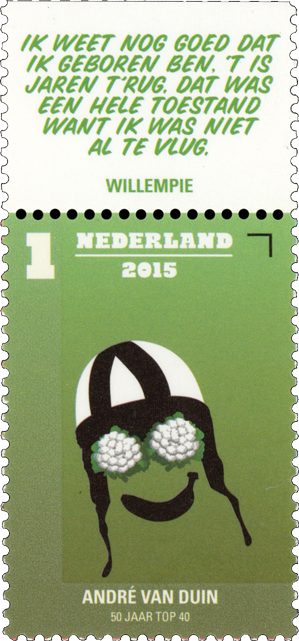
Paul de Leeuw
Netherlands, Scott #1482f
Paul de Leeuw (born 1962) is a Dutch television comedian, singer and actor. He is best-known internationally for presenting the results for the Dutch televote in the Eurovision Song Contest 2006. Prior to announcing the results, he famously gave his personal telephone number to male presenter Sakis Rouvis, live on-air, and made other comments. In 2007, he was made a Knight of the Order of the Netherlands Lion. He married Stephen Nugter in 2000.
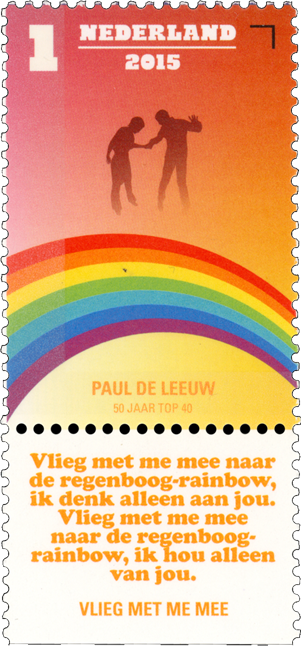
Roy Olivero
Netherlands, Scott #1482h
Roy Olivero (née den Burger) (born 1975), originally from Port of Spain, Trinidad, was a member (the "cowboy") of the Dutch, high-camp, Eurodance music group, Vengaboys. They released their hit song, "We're Going to Ibiza!" in 1999. He left the group in 2004 and six months later began his career as a flight attendant. He married his husband in 2006 and has performed as his drag showgirl alter-ego Chrystal Conners in Rotterdam.
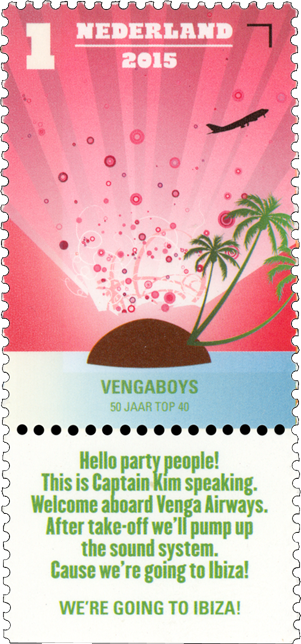
Desiderius Eramus
Netherlands, Scott #1498g-h
Erasmus (1469-1536) was a Dutch philosopher and Christian scholar who is widely considered to have been one of the greatest scholars of the northern Renaissance. He was a member of the Catholic Church all his life, remaining committed to reforming the church and its clerics' abuses from within. He had no interest in women, his passionate correspondence revealed his love for fellow monk Servatius Roger, and he was enamored of pupils Thomas Grey and William Blount. (Click on image to see in a new window a version an additional label and selvage instriptions.)
Euro Pride 2016
Netherlands, Scott #1517
These stamps appeared on July 18, 2016 to celebrate EuroPride being held in Amsterdam. EuroPride is a pan-European international event dedicated to LGBTQ pride. The first EuroPride was held in London in 1992.
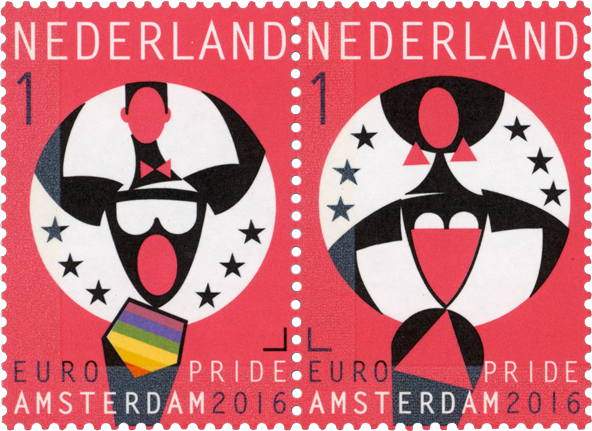
Erwin Olaf
Netherlands, Scott #1593
Erwin Olaf Springveld's (born 1959) often daring and provocative photos have been exhibited around the world. Known professionally as Erwin Olaf, he has provided advertising campaigns for Levi', Microsoft, and Nokia, and designed the 2014 Dutch euro coins featuring King Willem-Alexander. In a 2008 interview for The Telegraph, he said "I could never hide being gay, even when I was six." (Click on image to see a larger version in a new window)
George Michael
Netherlands, Scott #1557a
George Michael (1963-2016) was born in East Finchley, North London, and became one of the best-selling music artists of all time. He rose to fame as part of the music duo, Wham! Their international hits included "Wake Me Up Before You Go-Go " and "Last Christmas. " Michael 's (first solo single release, "Careless Whisper, " reached number one in 1984. His 1987 solo debut album, Faith, sold 25 million copies globally. He came out as gay in 1998.
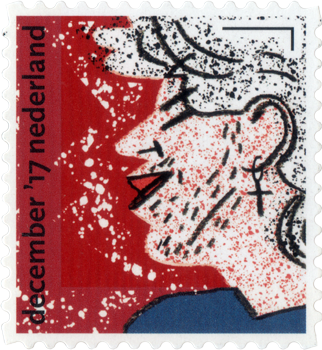
Jan Taminiau
Netherlands, Scott #1629b
Jan Taminiau (born 1975) was born in Goirle and graduated from the ArtEZ University of Arts in Arnhem. He launched his own fashion label in 2004, and in 2014, he received the Grand Seigneur, the most prestigious fashion award in the Netherlands. He designed the gown worn by Queen Máxima at her husband 's 2013 inauguration. Taminiau lives with Juan Várez, former CEO of Christie 's Spain
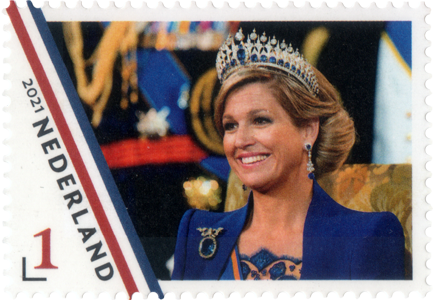
Katherine Mansfield
New Zealand, Scott #946
Katherine Mansfield (1888-1923) was born in Wellington and published her first short story in New Zealand Graphic and Ladies Journal magazine in 1900. She was an accomplished cellist and became disillusioned by the repression of the Maori people. She moved to London in 1903 and attended Queen's College. She decided to write short stories professionally and was most prolific after 1916. After affairs with both women and men, Katherine moved in with Ida Baker, her "wife," in 1917.
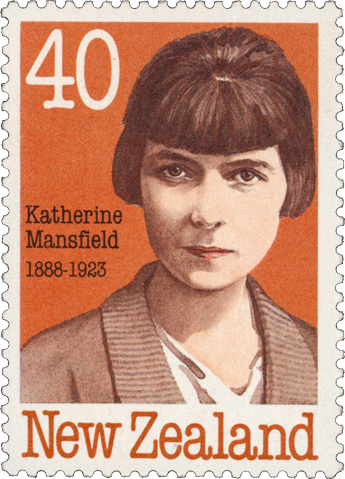
Ian McKellen
New Zealand, Scott #1750, #1837, #1901
Sir Ian Murray Kellen (born 1939) is an English actor now widely known for his film roles. However, his early successes were in the theater, his first professional role being a Roper in the Belgrade Theater's production of A Man for All Seasons. Four years later, he debuted in London's West End district and by the 1970s and 1980s was performing frequently at the Royal Shakespeare Company and the Royal National Theatre. Early on, McKellen began taking film and television roles as well, but his appearances in Hollywood blockbuster film like the X-Men series and the Lord of the Rings trilogy extended his fame. His stepmother was unfazed when he told her he was gay. He has had several long term relationships over the years and publicly came out during a 1988 BBC radio program debate over an anti-gay law proposed in parliament. (click on image to see a larger version in a new window)
Richard Armitage
New Zealand, Scott #2490, #2496a
English actor and author Richard Armitage (born 1971) received international recognition for his role as dwarf king and leader Thorin Oakenshield in Peter Jackson's film trilogy adaptation of The Hobbit. In school, he was trained in drama and music, gaining acting experience in local amateur and professional productions. After completing the program at Pattison College in 1988, Armitage joined the Nachtcircus in Budapest for six months to obtain an Equity Card, a requirement at the time for entertainment professionals to work in the United Kingdom. Upon returning, he pursued a career in musical theatre. He also acted in dramatic theater productions, and eventually decided that would be his focus. He has since made numerous television and film appearances. In mid-April of 2023, Armitage came out publically in a series of interview, saying he had come out to his parents at age 19 and had a partner. In addition to the 2013 New Zealand stamp depicted that has a self-adhesive twin, Armitage's Thorin Oakenshield character also appears on New Zealand stamps issued in 2012 (Scott #2437, 2440a) and 2014 (Scott #2554), not shown.
New Zealand Pride
New Zealand, Scott #2951
New Zealand issued in 2021 a pride stamp to reflect 35 years since passage of the Homosexual Law Reform Act that legalized consensual sex between men aged 16 and older as well as heterosexual anal sex. It depicts the Daniel Quasar's Progress Pride flag, a variation of the rainbow pride flag that incorporates additional colors to explicitly represent trans people and LGBTQ+ communities of color. Quasar describes himself as "a queer non-binary celestial object having a human experience. Artistry is my school of magic. Design is my path of choice."
Lauritz Melchior
Nicaraugua, Scott #965
Lauritz Melchior (1890-1973) was born in Copenhagen and began operatic vocal studies at the Royal Opera School. In 1913, he made his debut in the baritone role of Silvio in Pagliacci at the Royal Theatre. Advised that he was actually a tenor "with the lid on,”:, he restudied his voice in 1917 and 1918. His second debut was in the title role of Tannhäuser also at the Royal Theatre. In 1920, Lauritz met novelist Hugh Walpole, who became his patron and lover for six years. He debuted in London in 1924 to smashing success, followed shortly with his debut in Bayreuth. In 1926, Lauritz met merchant seaman Emil Opffer. As a member of New Yorkés Metropolitan Opera, he sang 519 performances between his debut in 1926 and 1950, including his breakthrough performance in 1929 in Tristan und Isolde. He holds the world record for the lowest score (13%) secured in a duplicate bridge tournament
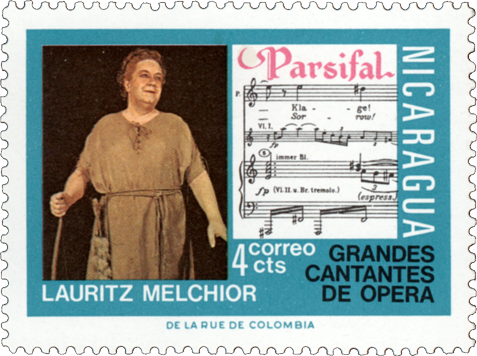
Edvard Grieg
Norway, Scott #255-58
Composer and pianist Edvard Grieg (1843-1907) was born in Bergen and started piano lessons at age six. He studied the instrument at the Leipzig Conservatory and made his concert debut in 1861. He moved to Copenhagen and married his first cousin, Nina Hagerup, in 1867. From 1874 to 1876, he composed incidental music to accompany Henrik Ibsen’s play, Peer Gynt, including the famous excerpt, "In the Hall of the Mountain King." He was music director of the Bergen Philharmonic Orchestra from 1880 to 1882. Late in life, he met and fell in love with Australian composer Percy Grainger. (click on image to see the entire set of four in a new window)
Per Aabel
Norway, Scott #1278
Per Aabel (1902-1999) attended the Academy of Fine Arts in Paris and studied with Max Reinhardt in Vienna before making his acting debut in 1931. He worked at Oslo's Central Theatre from 1938 to 1940 and at Norway’s National Theatre from 1940 to 1972. After retirement, he was a frequent entertainer on television, at national events, and for anniversaries. He was decorated with the Grand Cross of the Order of St. Olav in 1988. He was Norway's best-known closeted gay man. Not just his close friends, but the public knew. Near the end of his life, he finally made a couple appearances with his longtime companion, Finn Sörensen.
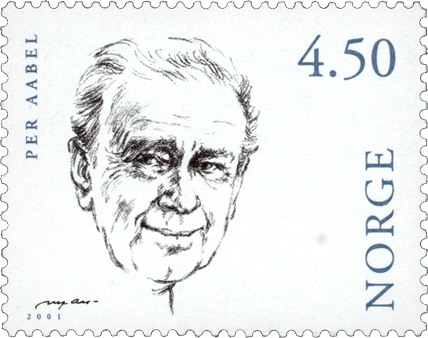
Love Knows No Gender
Philippines, Scott #3850c
On February 6, 2020, the Philippines released four stamps celebrating Valentine's Day, including one featuring a rainbow heart with the text, "Love Knows No Gender." The country name and denomination are also in rainbow colors, unlike the other three stamps with inscriptions of "Love Nature," "Love for Country" and "Love Yourself."

Frédéric Chopin
Poland, Scott #1061, #2125, #3080, #3793
A Polish composer and virtuoso pianist of the Romantic era, Frédéric Chopin (1810-1849) was born in Zelazowa Wola, west of Warsaw, grew up in Warsaw, and began professional piano tutoring in 1816. A child prodigy, he began public performances at age seven, and in 1817, he composed two polonaises. In his youth, he had two unrequited same-sex loves. Starting in 1826, he studied music theory, figured bass, and composition at the Warsaw Conservatory. His passionate letters to Tytus Woyciechowski suggested a homoerotic relationship. He made his debut in Vienna, then moved to Paris, receiving French citizenship in 1835. In 1838, he and George Sand became lovers, their relationship lasting until 1847.
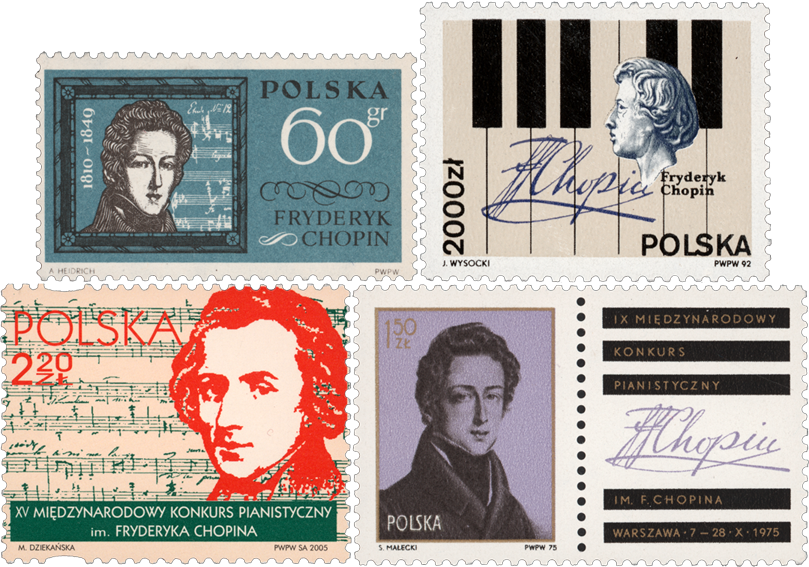
Karol Szymanowski
Poland, Scott #2514, #3861
Not as well known as Chopin, Karol Szymanowski (1882-1937) was also a Polish composer and pianist. Born in what is now Tymoshivka, Ukraine, he studied music privately with his father, and in 1901, attended the Warsaw Conservatory. Musical opportunities in Russian-occupied Poland were quite limited, so he travelled. He had relationships with chemist Stefan Kazimierz Spiess and dancer Boris Kochno. In Vienna, he composed the opera, Hagith, and song cycles, The Love Songs of Hafiz. In 1918, he completed a two-volume novel, Efebos, with homosexuality as its subject. From 1926 to 1930, he was Director of the Warsaw Conservatory. He died of tuberculosis at a sanatorium in Lausanne.
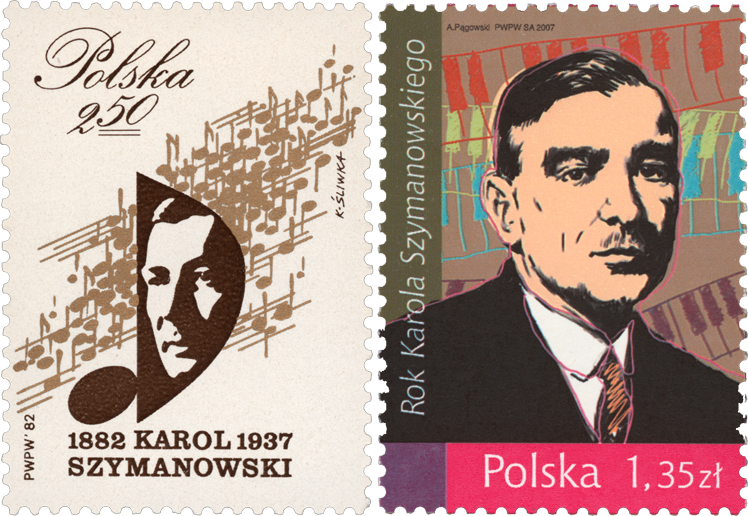
Narcyza Żmichowska
Poland, No Scott # for 2019 postal card
Narcyza Żmichowska (1819-1876) was a novelist and poet considered the precursor of feminism in Poland. She enrolled at the Bibliotheque Nationale in Paris and became one of the first women ever at the Académie Française. In Poland, she worked as a governess, wrote, published, founded a group of Suffragettes, and took part in anti-Tsarist activities. In her first novel, Poganka (The Heathen) she is known to have expressed interest in her friend Paulina Zbyszewska. (click on image to see a larger version in a new window)
Henryk Tomaszewski
Poland, No Scott # for 2019 postal card
A mime artist and theater director, Henryk Tomaszewski (1919-2001) was born in Poznań and after World War II, settled in Kraków to study theater and ballet. In 1949, he moved to Wrocław to teach ballet. His Mime Studio had its first performance in 1956, and the renamed Wrocław Mime Theatre was granted State theater status in 1959. During the 1960s, he collaborated with the Służba Bezpieczeństwa (State Counterintelligence Service), possibly under blackmail over his homosexuality. (click on image to see a larger version in a new window)
Virginia Quaresma
Portugal, Scott #3169a
Virgínia Quaresma (1882-1973) was the first woman to become a professional journalist in Portugal. In 1903, she was one of the first women to graduate from the University of Lisbon Faculty of Arts. She was a leading feminist at the beginning of the century and was openly lesbian. In 1912, she travelled to Brazil with her partner Maria da Cunha Zorro to report on the femicide of Anita Levy by husband João Barreto, elevating her career. Quaresma became director of the American News Agency and organized events to spur Luso-Brazilian cooperation. In 1933, she relocated permanently to Brazil with her partner Madam Silva Passos.
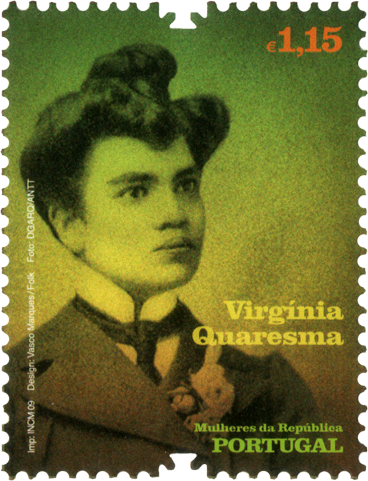
Pope Leo X
Portugal, Scott #3634-35
Pope Leo X (1475-1521) was ruler of the Papal States from 1513 until his death. He was born Giovanni di Lorenzo de' Medici of the prominent political and banking family of Florence and became cardinal in 1489. It was his 1520 Papal Bull that condemned Matin Luther, rendering ongoing communication difficult. Two contemporary historians, Paolo Giovio and Francesco Guicciardini, wrote of his sexual attraction to males. Guicciardini says that after the beginning of his pontificate he grew "exceedingly devoted to that kind of pleasure that for honor's sake may not be named."
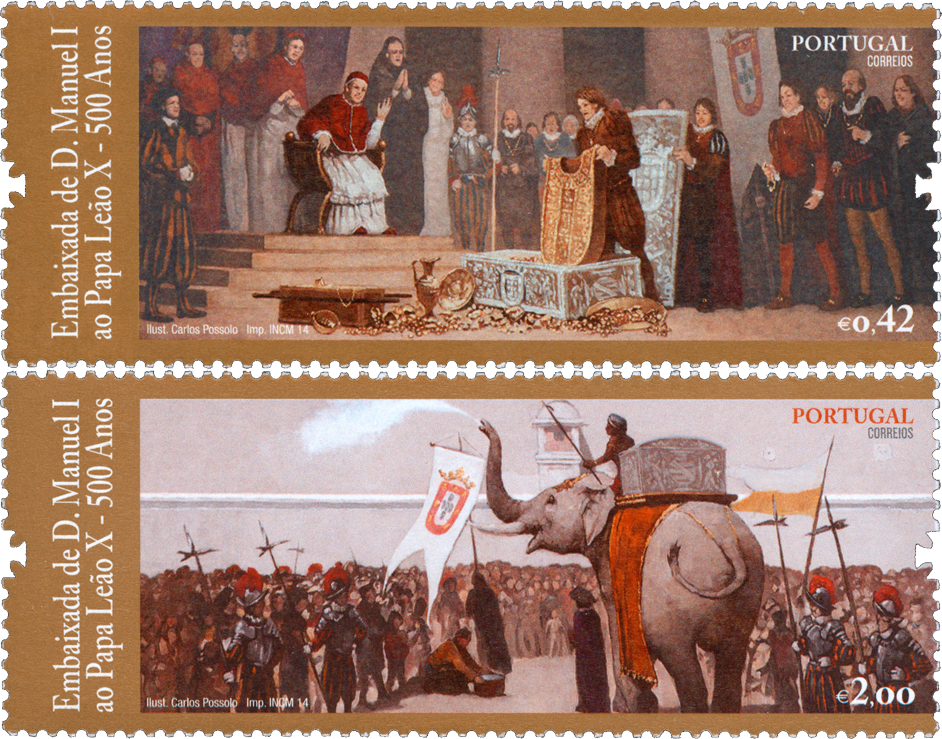
RETURN TO TOP OF PAGE

